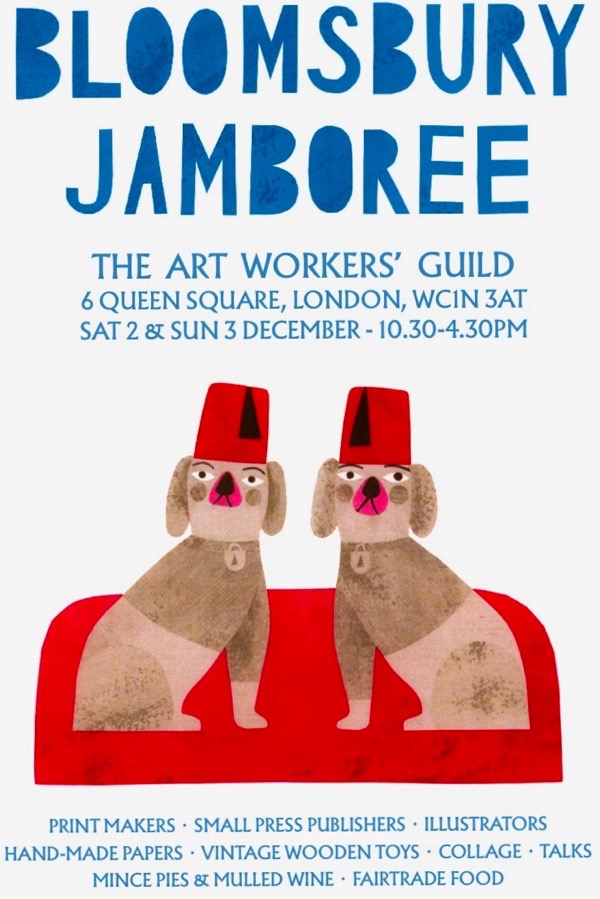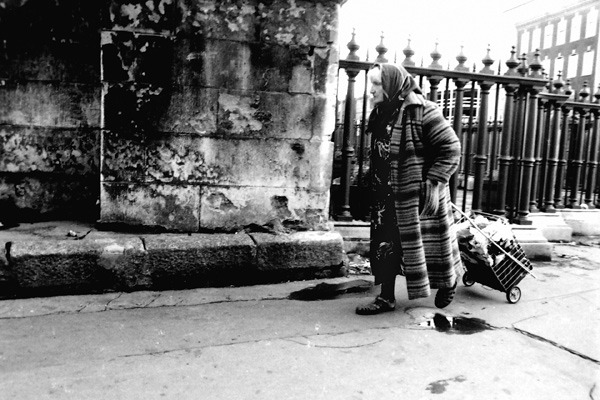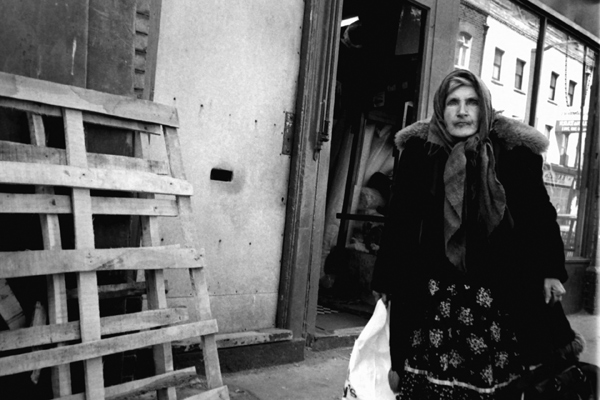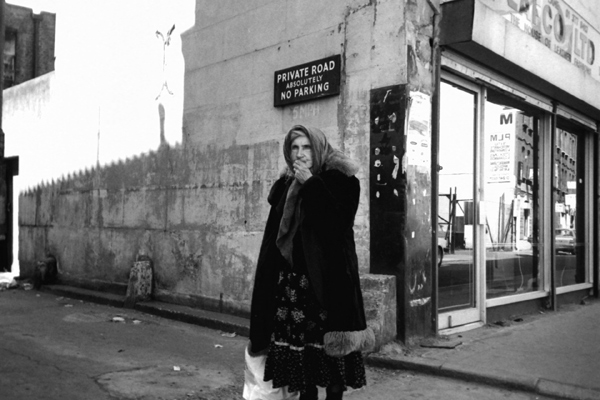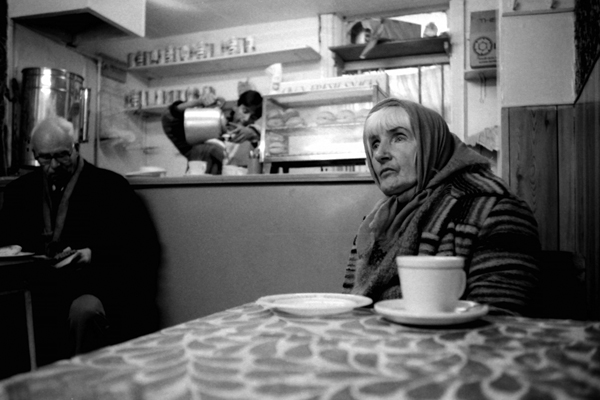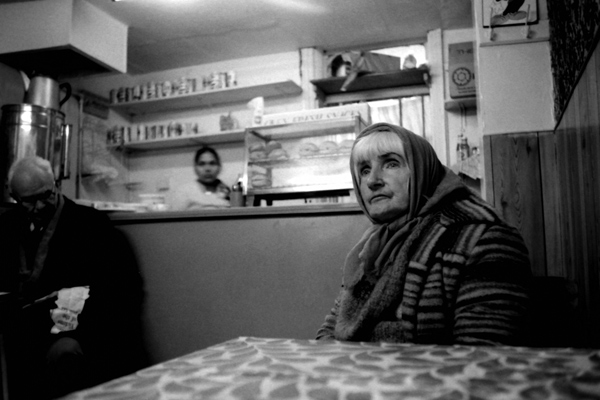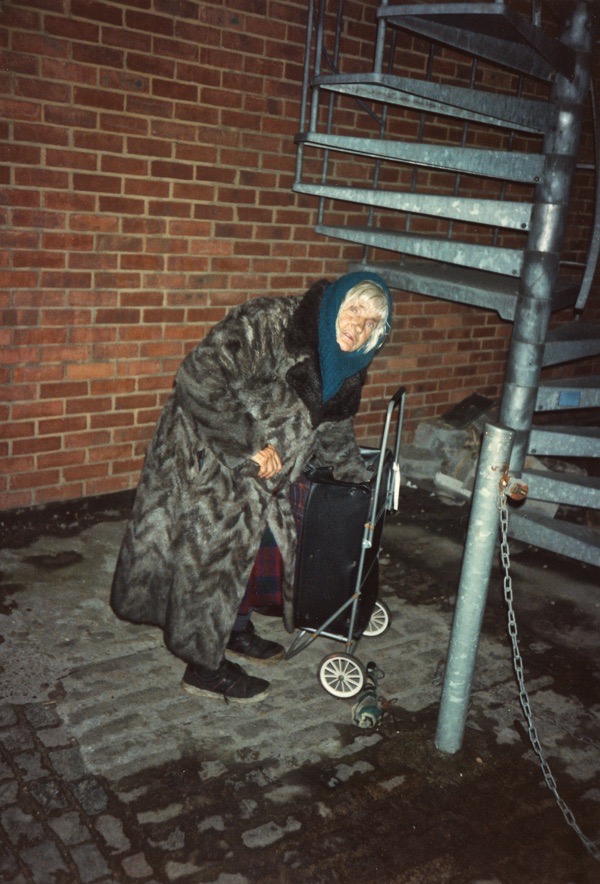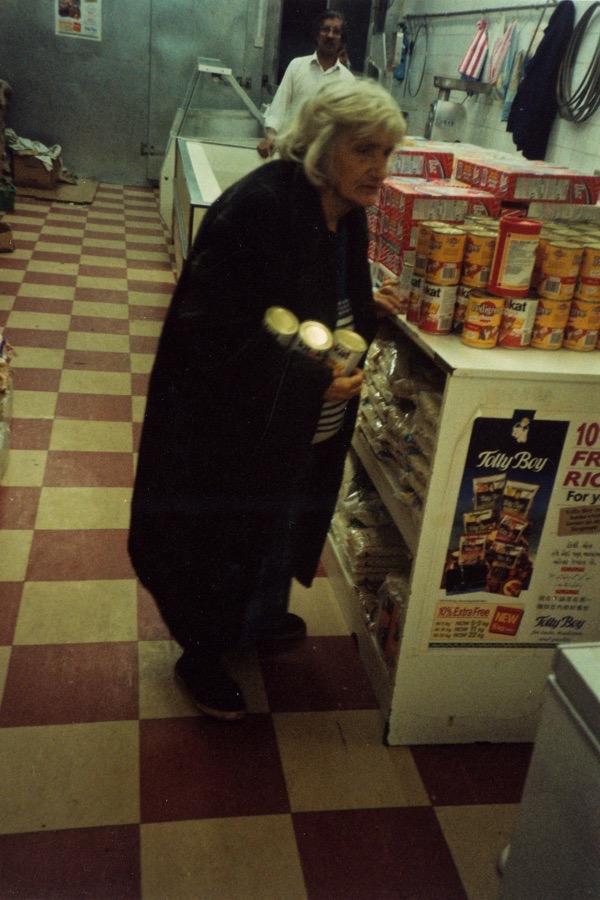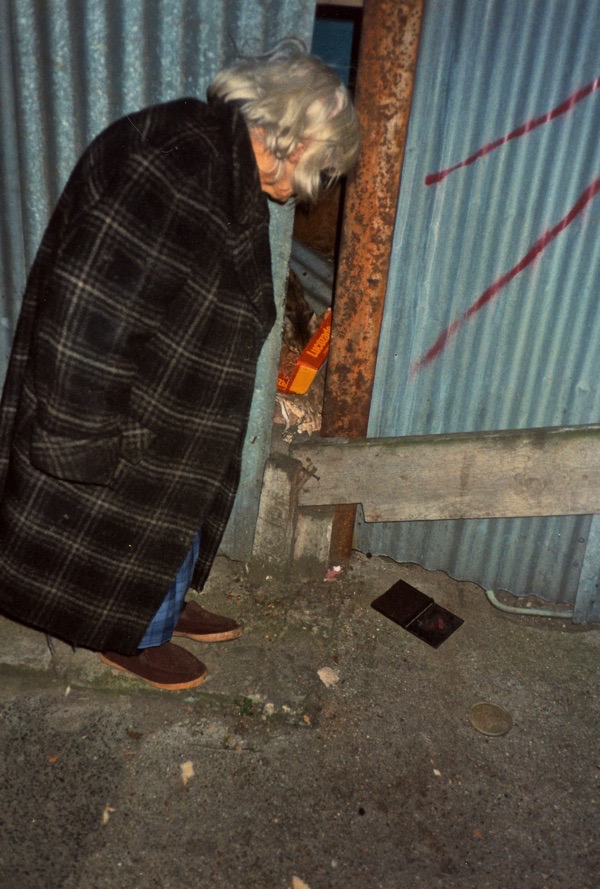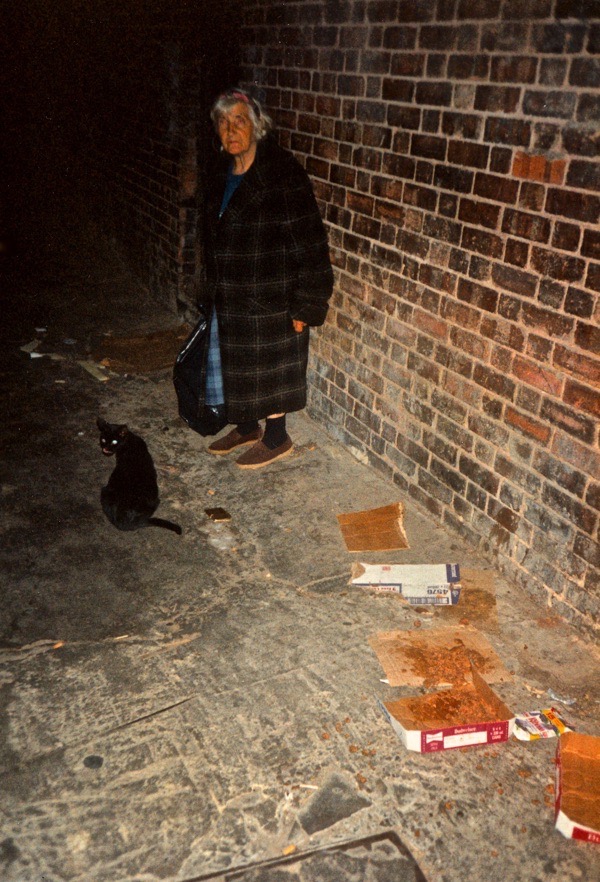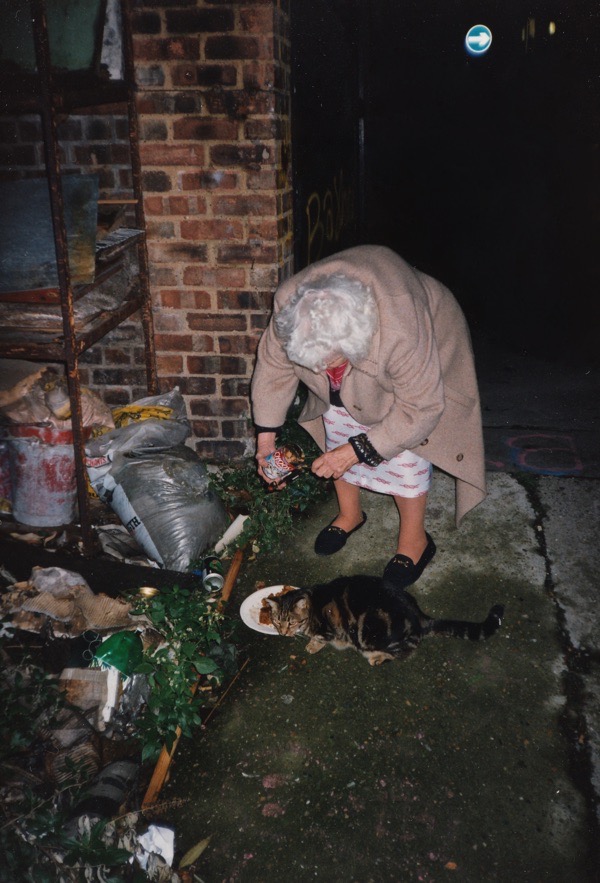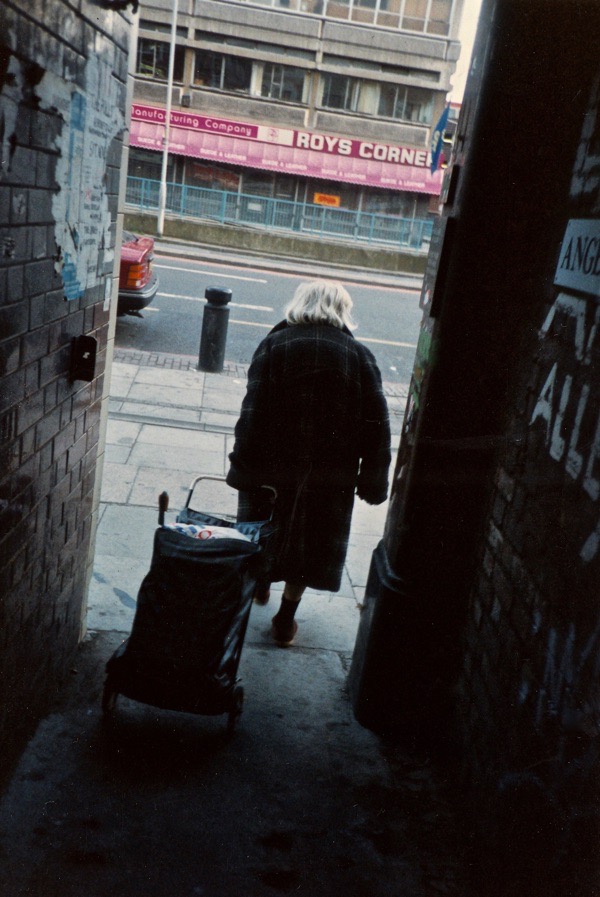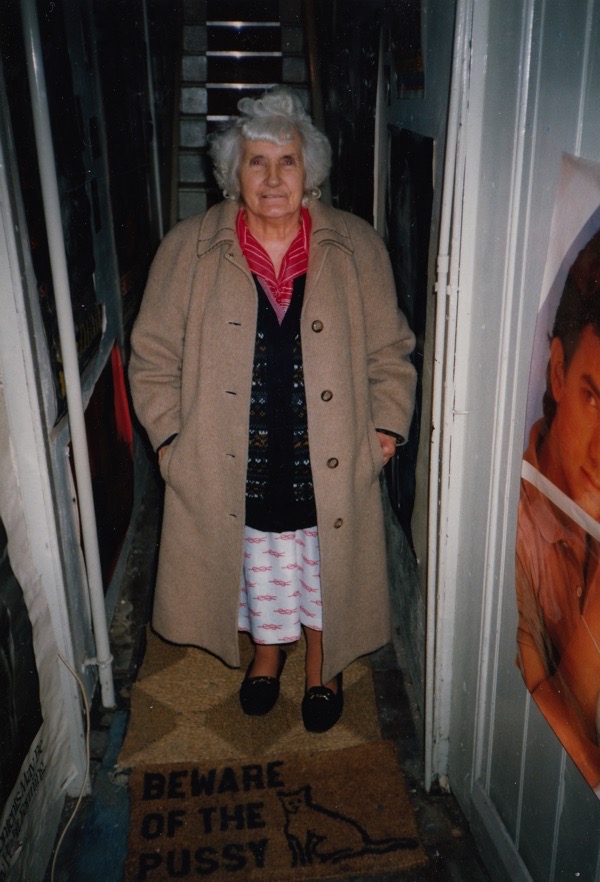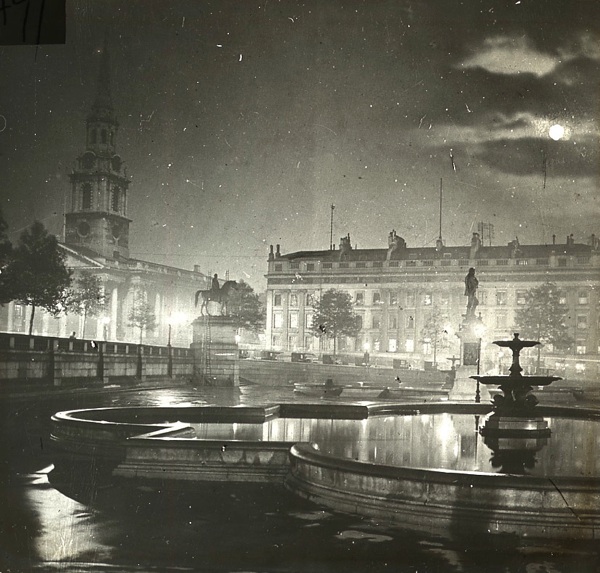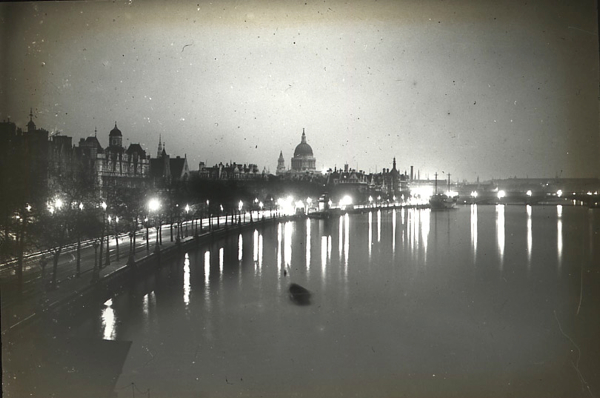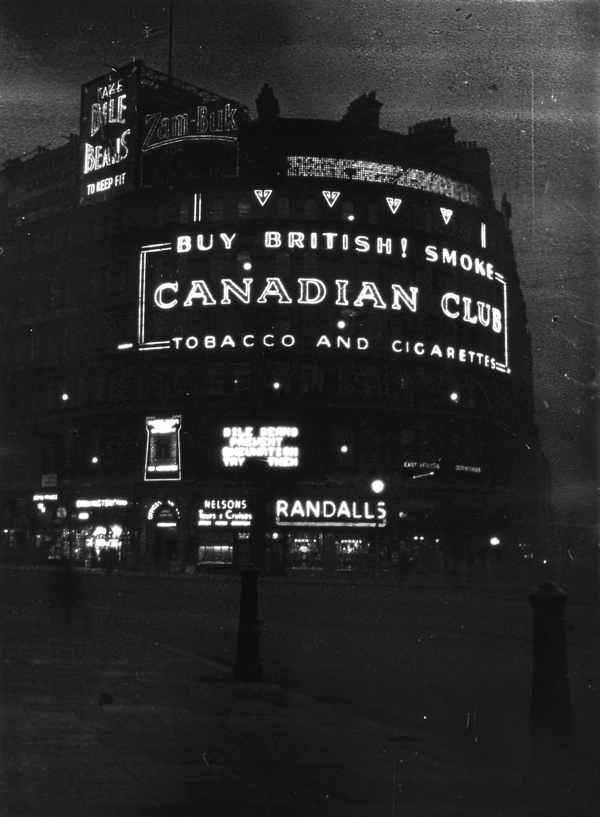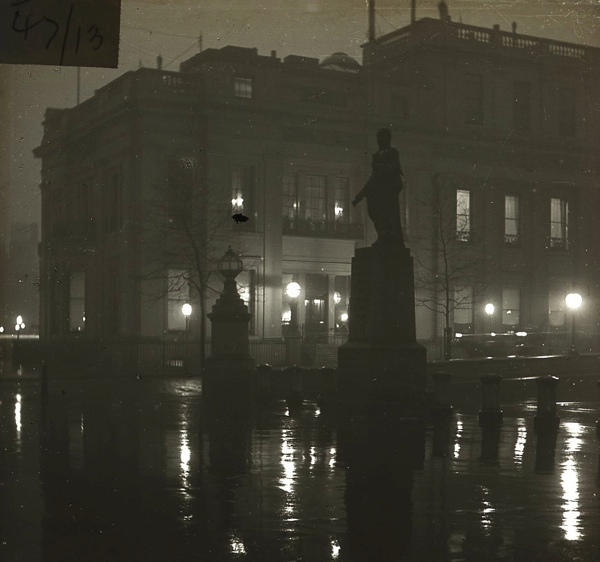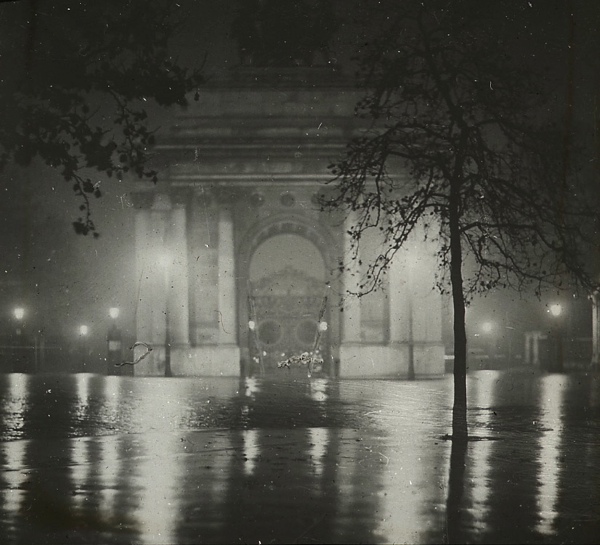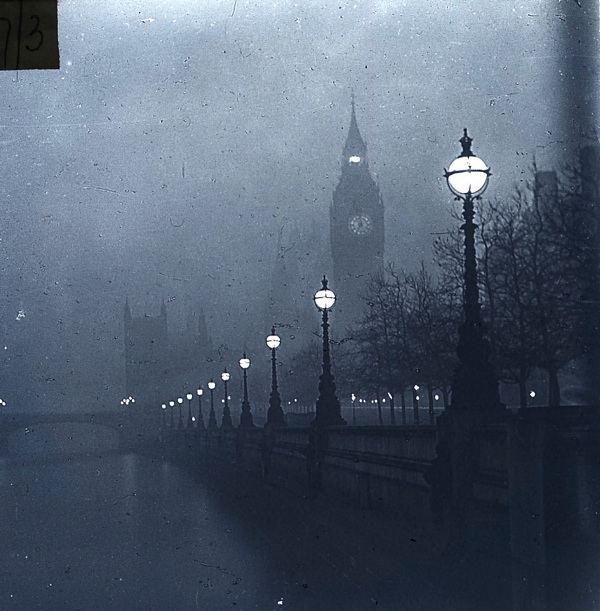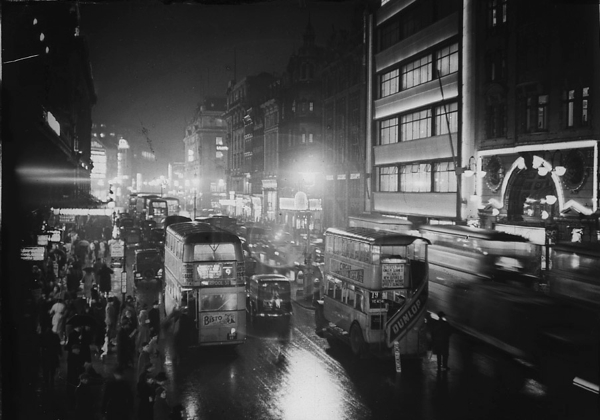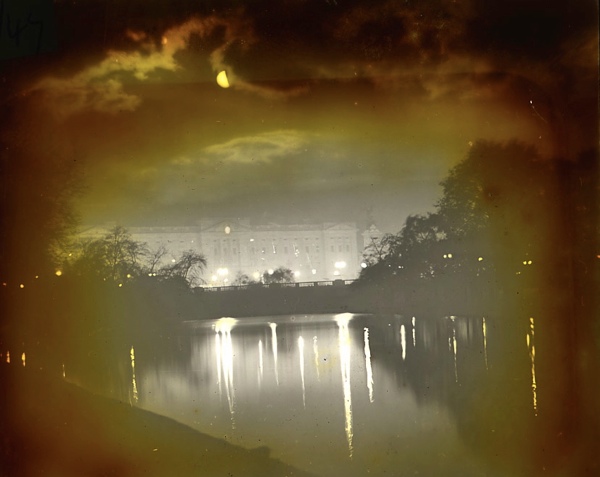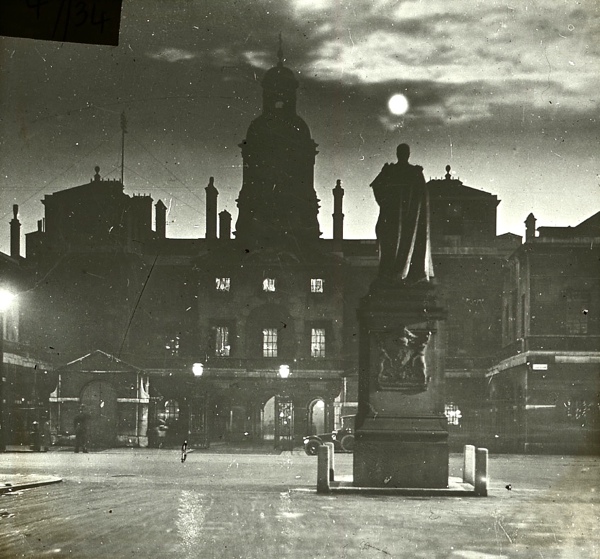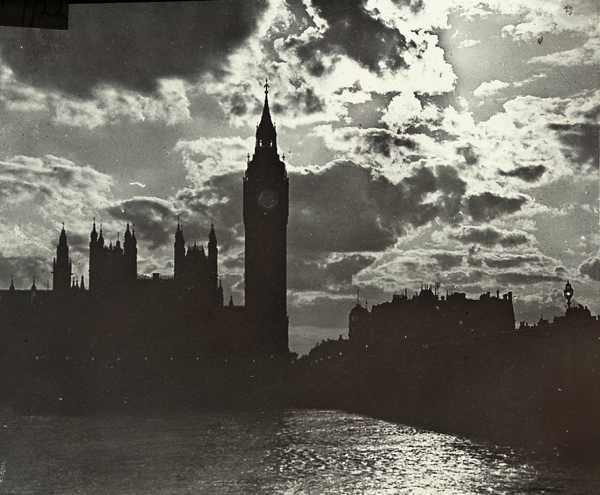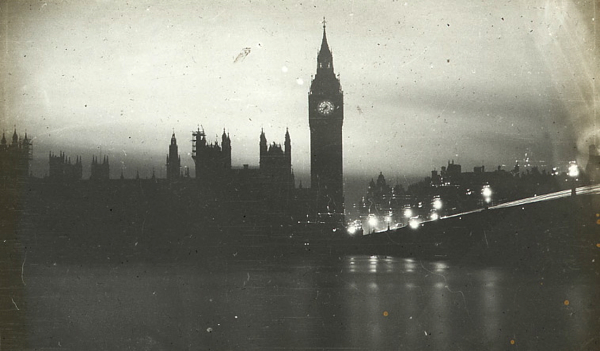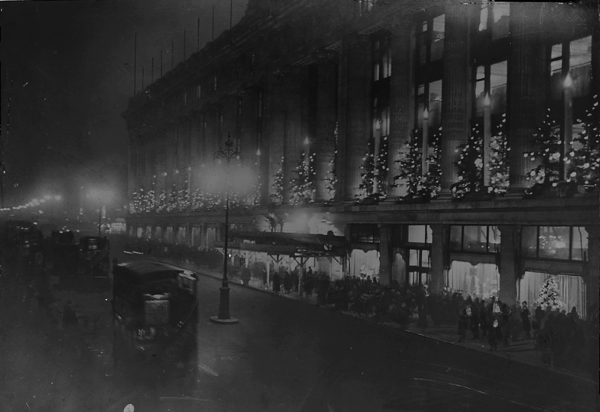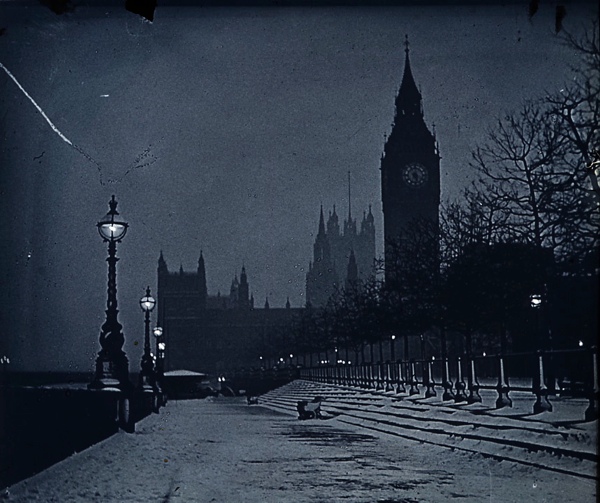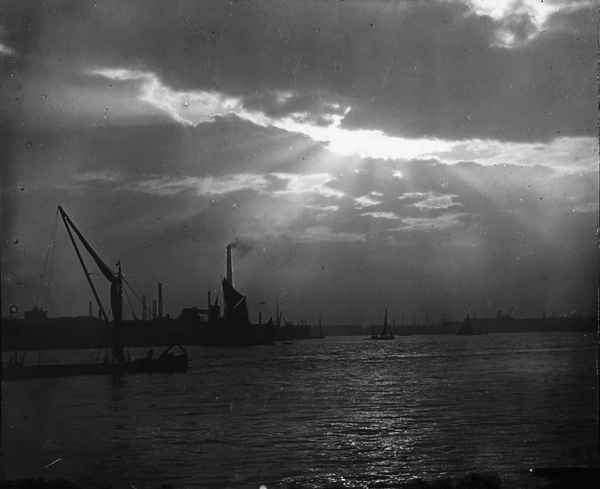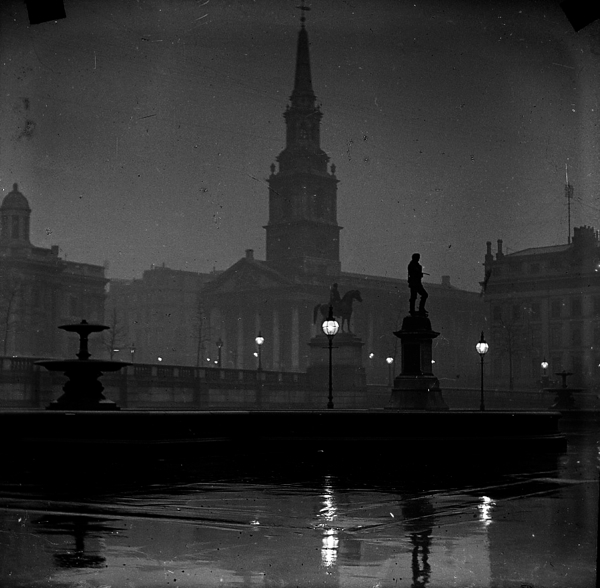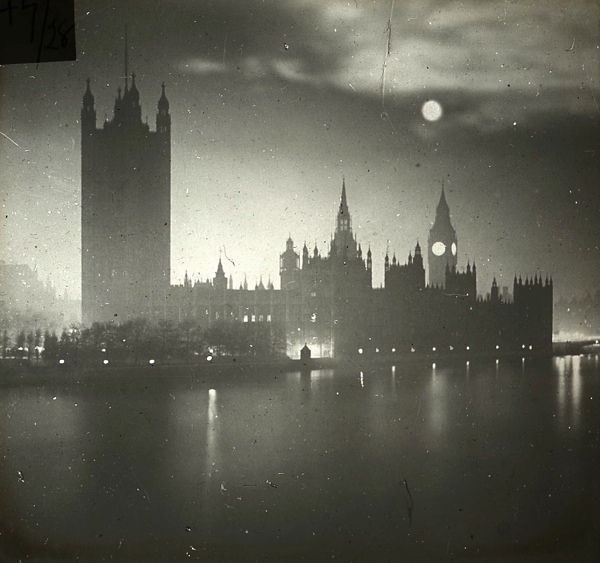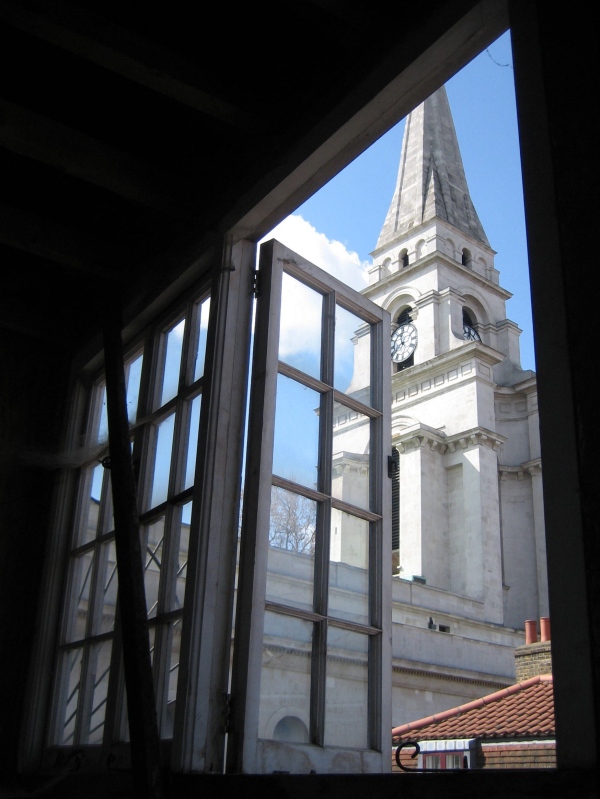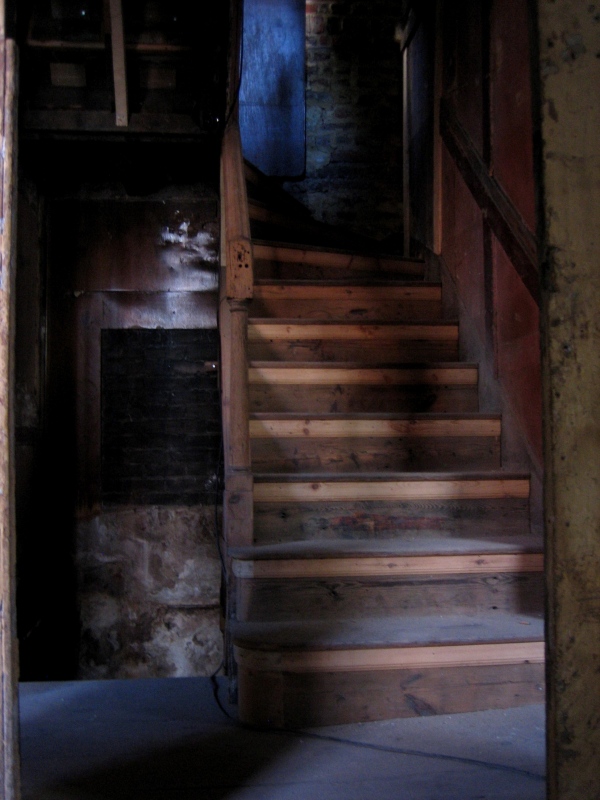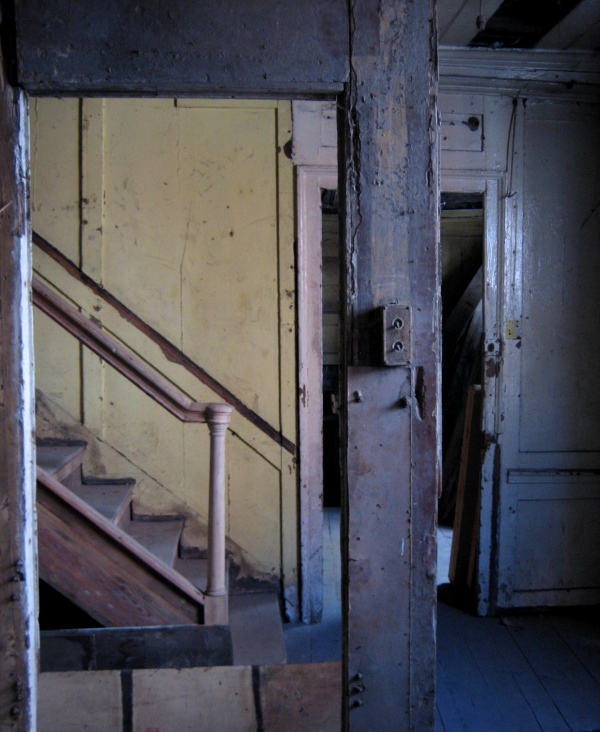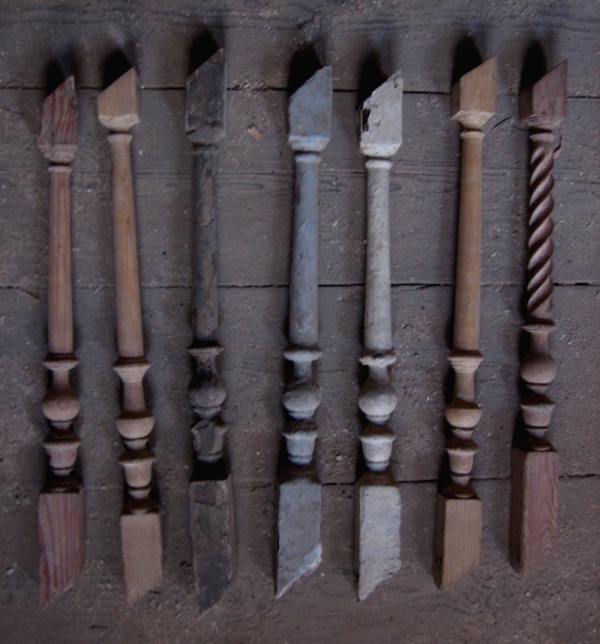George Fuest, Baker
I am reading my short story ON CHRISTMAS DAY this Saturday 2nd December at 11am as part of the BLOOMSBURY JAMBOREE at the Art Workers’ Guild in Queens Square, WC1N 3AT.
CLICK HERE FOR TICKETS
CLICK HERE TO ORDER A SIGNED COPY FOR £10
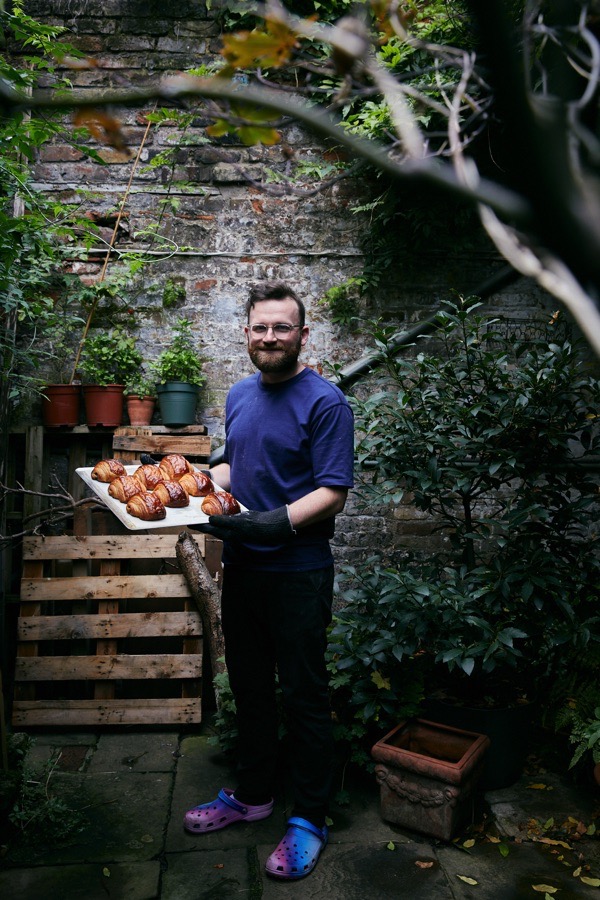
George Fuest by Patricia Niven
Last January, I was intrigued to hear of a baker running a solo bakery from a shed in the backyard of a house in Fournier St, by the name of Populations Bakery. Orders could placed online, I learnt, and collected from the front door direct from the baker George Fuest on Friday. So I ordered Galettes des Rois, without any expectation but as a treat to lift my spirits in the first weeks of New Year, only to be astonished by the sophistication and accomplishment of these sweet treats.
Over the past year, a stream of delights followed including a magnificent Simnel cake at Easter and an unforgettable birthday cake in the autumn – all evidence of a truly outstanding talent in baking. Then last week I happened to meet George one cold morning in the cycle lane in Westminster just below Big Ben as it struck nine. He was on his way to make deliveries but he stopped his bike and handed me a mince pie. It was my first Christmas moment and now I am spoiled because I cannot imagine any other being as good as George’s.
Contributing photographer Patricia Niven & I joined George for a session in the bakery recently – before the Christmas rush began – to see for ourselves what goes on. George baked loaves of bread, croissants, danish pastries and pains au chocolate with an ease which belied his precision and expert judgement, while he explained to us how and why he conjured his bakery into being in the house where he grew up.
“Even before Lockdown I used to make a lot of bread and pastries. When I left university, I was trying to start a website and to finance that I worked as bike courier for Little Bread Pedlar delivering pastries to coffee shops. That was when I realised I just really enjoyed eating pastries and it inspired me to start baking.
I started working at a coffee shop as a barista because I wanted to get into the coffee industry. But then, when Lockdown happened, I started baking a lot more regularly and delivering to friends and family, mostly as a way to have something to do, to get out on my bike and go and see people, delivering supplies. Then I did some charity fundraisers because people wanted to pay for my pastries but I did not think they were good enough, so I asked people to make donations to charity rather than take money from them. And it grew from there.
I was attracted to the mission of a bakery employing heritage grains, supporting farmers that are focussing on regenerative agricultural practices. I realised I really wanted to be a baker. I am interested in being the middle person between the farmer and the customer, and promoting this approach to baking.
During Lockdown I could get on my bike and deliver direct. I used to bake though the early hours of the morning and then be cycling around London for six or seven hours a day. Now people come and collect, and I have some drop-off points around London.
I am self taught though a lot of trial and error, and a lot of reading recipes. And I did work experience at Flore Bakery in Bermondsey and at Landrace Bakery in Bath and I did holiday cover at Toad Bakery in Camberwell. I learnt a lot that way.
When you work with specialty grain, there is a lot of trial and error anyway because you can only learn how to interpret the flour by working with it. With modern cereals, you get this complete consistency that industrial processes require – they want the baking to be the same every time.
That is not the case with heritage grain where you can get different characteristics from field to field, so every sack of flour can be quite different which means you are always learning – as a baker – the properties of the grain and what you can do with it. The baking tastes better. In commercial production, there is no requirement for flavour. Modern wheat is roller milled which strips off a lot of elements of the grain but, with stoneground, the entire grain is ground.
I call my bakery Populations because it focusses on genetically diverse wheat. With modern wheat you get a monoculture where every plant is genetically identical which makes them vulnerable to infections and pests, so they require a lot of pesticides and herbicides which are oil-based chemicals. With populations-diverse wheat, you have a blend of many different wheats which are grown in the same field and the seeds saved, and the process is repeated again and again. This creates a complete genetic diversity in the crop and it will be different in every part of the country because it will adapt to wherever it is grown.
This may sound like the past, employing traditional methods and not using modern fertilisers, but it is also the future because it is the way crops need to be grown to reduce our dependency on fossil fuels and start regenerating the land.
When I am baking, it is a lot of hours work. When I started out, I did not have many customers so I would be cycling seventy kilometres a day to deliver bread and pastries, after five or six hours of baking beforehand. It kept me fit but it was not really sustainable.
I would love to open a community-based coffee shop and bakery, and I am also enjoying small scale wholesale. This Christmas I am making mince pies for ten select coffee shops in London and it is lovely to get the feedback.
There are so many things I enjoy about this work. I love the challenge of woking with different grains and learning new methods. I still enjoy eating the pastries and my bread too!.”
Click here to order from Populations Bakery and collect from Fournier St
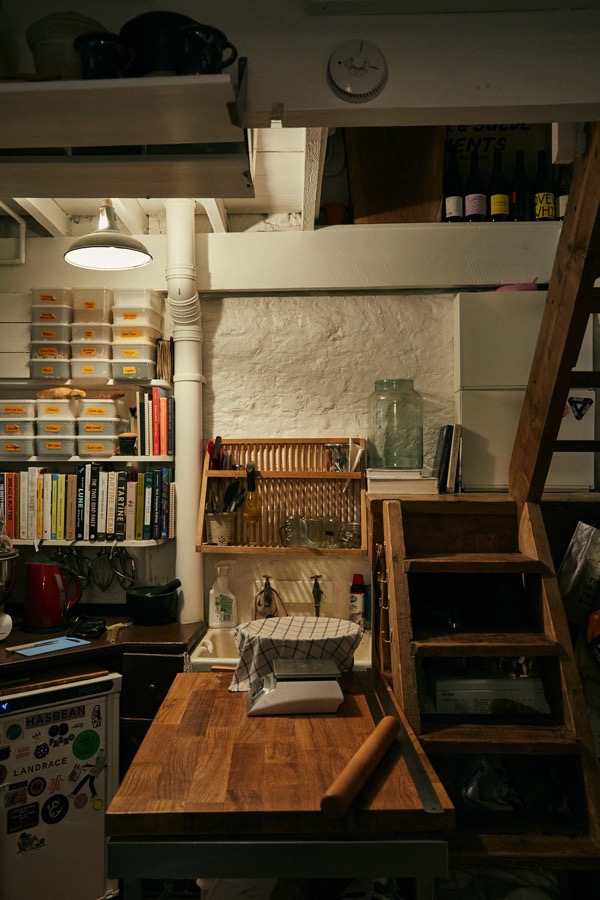


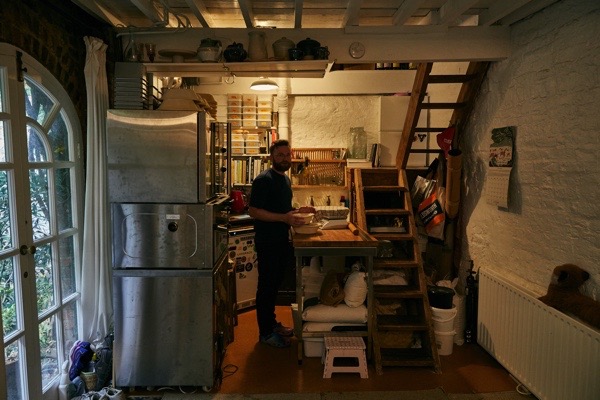



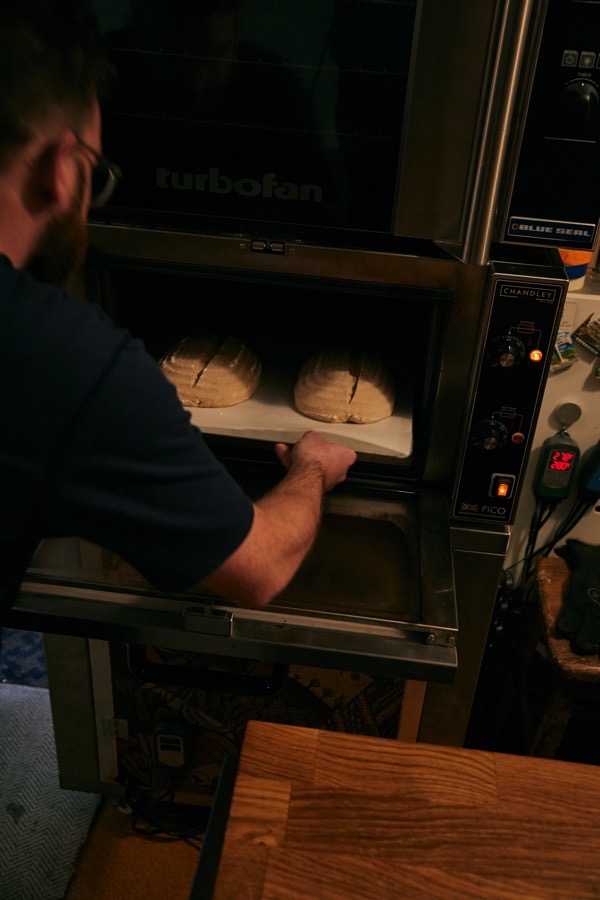
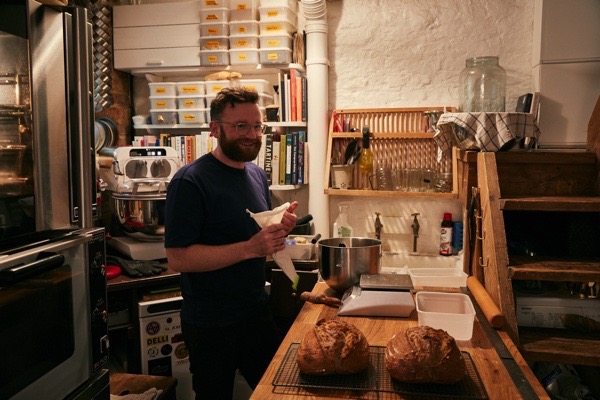

Sough dough loaves

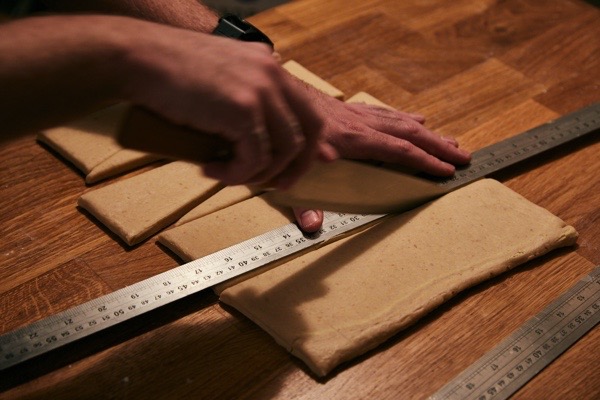
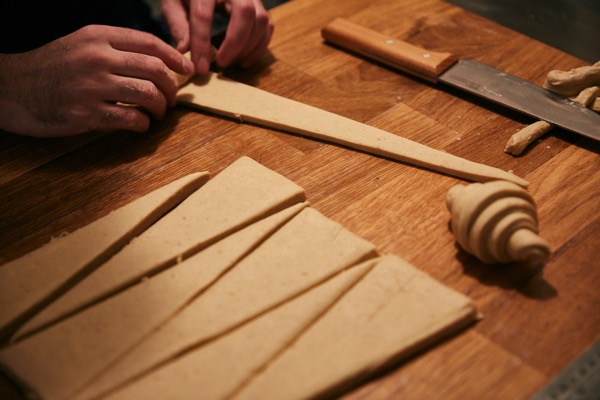
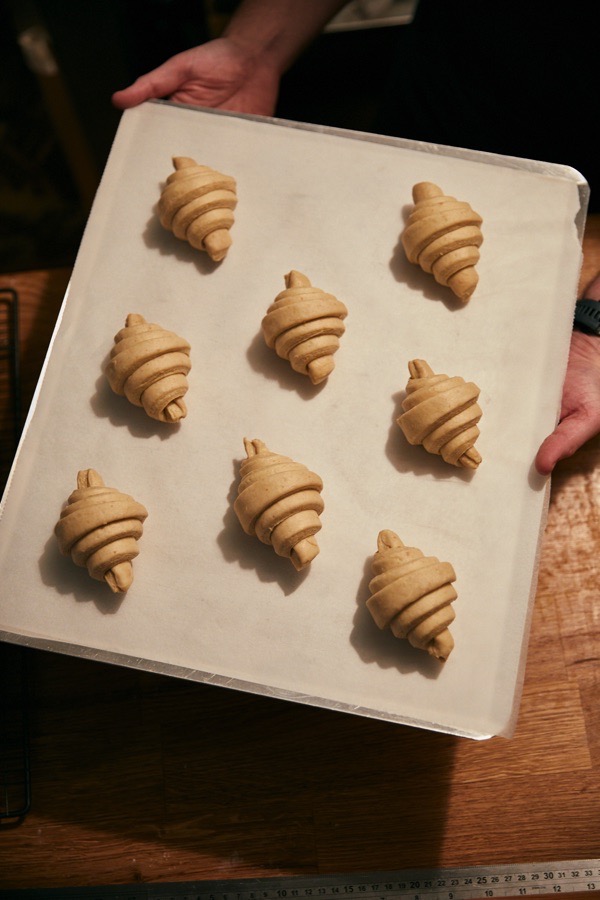
Croissants
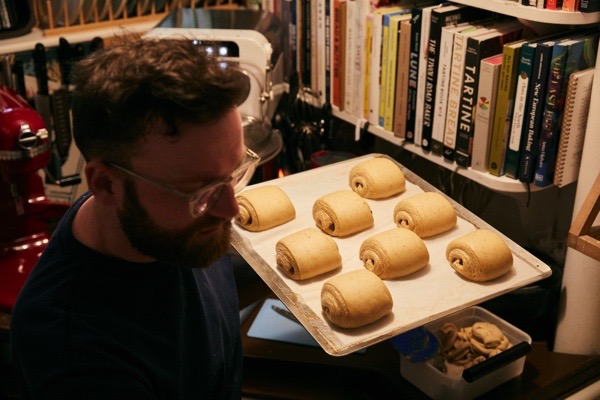
Pains au chocolate

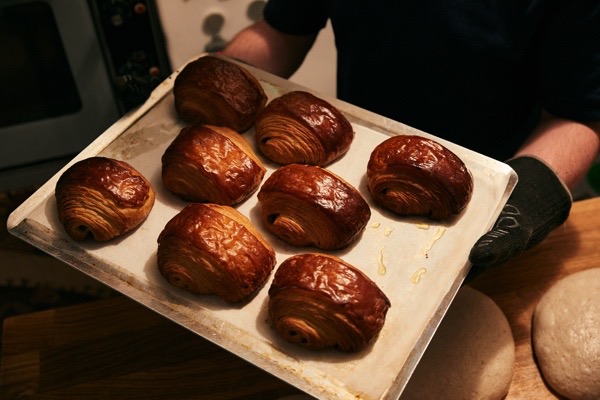


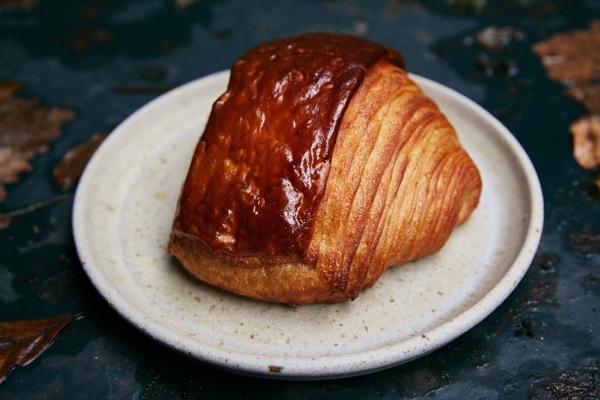

George Fuest
Photographs © Patricia Niven
You may also like to read about
Joan Lauder, The Cat Lady Of Spitalfields
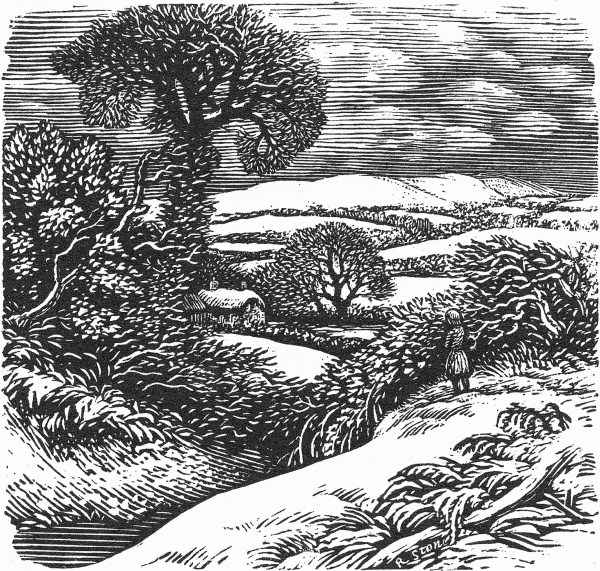
I am reading my short story ON CHRISTMAS DAY next Saturday 2nd December at 11am as part of the BLOOMSBURY JAMBOREE at the Art Workers’ Guild in Queens Square, WC1N 3AT.
CLICK HERE FOR TICKETS
CLICK HERE TO ORDER A SIGNED COPY FOR £10
In my imagination, Joan Lauder (1924-2011) was a mysterious feline spirit in human form who prowled the alleys and back streets, a self-appointed guardian of the stray cats and a lonely sentinel embodying the melancholy soul of the place.
Here are Rodney Archer’s memories with Phil Maxwell’s black and white photos from the eighties and Clive Murphy’s colour pictures from the nineties.
One day, when I went round to enjoy a cup of tea and shot of rum with Rodney in his cosy basement kitchen in Fournier St, he told me about Joan, the Cat Lady, who made it her business to befriend all the felines in Spitalfields during the nineteen eighties.
Rodney: Joan went all around the neighbourhood feeding the cats regularly and she had names for them. You’d see her crouching, looking through the corrugated iron surrounding Truman’s Brewery, waiting for the cats to come and then they suddenly all appeared. I think once I saw her there and I asked her what she was doing, and she said ‘I’m waiting for the cats to appear.’
‘My darlings,’ she really did call them, ‘My darlings,’ and it was wonderful in a way that she had this love of cats and spent her life encouraging them and feeding them and keeping them alive. I could never quite work it out, but she had a bag, like one of those trolleys you carry, full of cat food. Now, either she’d taken the tops off the tins or something, since I noticed – because she had a kind of witchlike aspect – that although she put her hands right into the tin to feed them and then just threw it down, I never saw any cat food on her hands. It was like something out of Grimm’s Fairy Tales.
Over the years, I would chat to her but she was someone that you had to have some time for, because once she began she went on and on. The Cat Lady was strange – she spent all her money on the cats – she was like a character out of Dickens. She was almost a street person, except she had a place to live. And she did get benefits and she wasn’t an alcoholic or anything, she was very doughty, she had a bit of a moustache.
She was the kind of woman that, a hundred years ago, people would have been fearful of in a way. There was something awesome about her, because she had her own aura and she was there to feed the cats, and the cats were much more important to her than people. I’d talk about my cat to her and I think once she stopped by my door, and I opened it, and my cat sat looking at her.
The Gentle Author: I’ve heard she had this mantra, “Cats are better than rats.” Were there a lot of rats at that time?
Rodney: I think there were. When the market was still going and you had all the fruit and vegetables, the rats would come out to feed. I never saw that myself, but you might see a rat running along the curb. A lot of people said they were looking forward to the market closing because the area would be cleaner and neater, but I regretted that the market left and there weren’t cabbages everywhere.
The Gentle Author: Can you remember when you first saw the Cat Lady?
Rodney: I think I first saw her on the corner of Fournier St and Brick Lane. She had a huge physical endurance, but I think she must have been exhausted by her journey every day, because she would often stop for quite a long time, and she’d just be there looking around. I suppose she might have been looking for the cats. That’s why you could catch up with her and ask her how she was doing.
One day I just spoke to her, maybe I’d seen her around, and I said, ‘Are you feeding the cats?’ And she told me, and I said had a cat and so we talked about cats and the wisdom of cats and that kind of thing. And afterwards, I’d see her quite often. She didn’t talk much to me about her life – but she was the Great Mother of all the cats in Spitalfields.
Phil Maxwell photographed Joan, the Cat Lady, in the eighties
The cat lady on Brick Lane in the late nineteen eighties.
Phil: The woman in this photograph was always dressed in a head scarf and large coat. Usually she would pull a shopping bag on wheels behind her. She was the Cat Lady of Spitalfields. She knew where every cat and kitten lived in the wild and made it her task to feed them every day. Her bag was full of cat food which she would serve on newspaper at designated spots around Spitalfields.
Phil: The Cat Lady pauses for a second beside the Seven Stars pub on Brick Lane. She has just left some food in the ‘private road’ for some cats.
Phil: The Cat Lady floats past Christchurch School on Brick Lane – with her eyes closed, she contemplates the next cat awaiting a delivery.
Phil: The Cat Lady waits outside her favourite cafe in Cheshire St. Now a trendy boutique, in the nineteen-eighties you could buy a cup of tea and a sandwich for less than a pound at this establishment.
Phil: The Cat Lady ‘kept herself to herself’ and avoided the company of others
Phil: It must be about twenty years since I last saw the Cat Lady of Spitalfields. She devoted her life to feeding the stray cats of the area. I have no idea where she lived and I never saw her talking to another person. She seemed to live in her own separate cat world. Even though I was sitting opposite her when I took this photograph, I felt that she had created a barrier and would be reluctant to engage in conversation. It was impossible to make eye contact. I’m pleased I photographed her on the streets and in her Cheshire St cafe. She would not recognise Cheshire St and Brick Lane today.
Clive Murphy’s portrait of Joan Lauder
At Angel Alley, Whitechapel, 5th March 1992
Feeding the cat from The White Hart in Angel Alley, 5th March 1992
In Gunthorpe St, 5th March 1992
Buying cat food at Taj Stores, Brick Lane, 3rd August 1992
In Wentworth St, 3rd August 1992
Calling a cat, Bacon St, 3rd August 1992
The cat arrives, Bacon St, 3rd August 1992
Alley off Hanbury St, 2nd August 1992
Hanbury St, 26th November 1995
At Aldgate East, 3rd August 1992
At Lloyds, Leadenhall St, 3rd August 1992
Walking from Angel Alley into Whitechapel High St, 3rd August 1992
Beware Of The Pussy, 132 Brick Lane, 26th November 1995
Clive visits Joan in her Nursing Home, 1995
Clive: The women I have loved you could count upon the digits of one hand – my mother, her mother, our loyal companion Maureen McDonnell, the poet Patricia Doubell and the demented, incontinent Joan Lauder, the Cat Lady of Spitalfields who, in 1991, when I first spoke to her was already my heroine, a day-and-night-in-all-weathers Trojan, doggedly devoting herself to cats because human beings had for too long failed her.
She looked at me with suspicion when I suggested we tape record a book. Only my bribe that half of any proceeds of publication would fall to her or her favoured charities and enable the purchase of extra tins of cat food persuaded her at least to humour me. I could swear I saw those azure eyes, set in that pretty face, dilate.
I had entrapped her with the best of intentions as she, I was to learn, often entrapped, also with the best of intentions, the denizens of the feral world to have them spayed or neutered in the interests of control. But to the end, her end, I don’t think she ever trusted or respected me. I once found her surreptitiously laying down Whiskas in my hallway for my own newly-adopted cat which I named Joan in her honour. And she once spat the expletive ‘t***’ at me in a tone of total dismissal. To be called a foolish and obnoxious person was hardly comforting, given that I believe my own adage ‘in dementia veritas’ holds all too often true.
Black & white photographs copyright © Phil Maxwell
Colour photographs copyright © Clive Murphy
The Nights Of Old London
I am reading my short story ON CHRISTMAS DAY next Saturday 2nd December at 11am as part of the BLOOMSBURY JAMBOREE at the Art Workers’ Guild in Queens Square, WC1N 3AT.
CLICK HERE FOR TICKETS
CLICK HERE TO ORDER A SIGNED COPY FOR £10
The nights are drawing in fast and I can feel the velvet darkness falling upon London. As dusk gathers in the ancient churches and the dusty old museums in the late afternoon, the distinction between past and present becomes almost permeable at this time of year. Then, once the daylight fades and the streetlights flicker into life, I feel the desire to go walking out into the dark in search of the nights of old London.
Examining hundreds of glass plates – many more than a century old – once used by the London & Middlesex Archaeological Society for magic lantern shows at the Bishopsgate Institute, I am in thrall to these images of night long ago in London. They set my imagination racing with nocturnal visions of the gloom and the glamour of our city in darkness, where mist hangs in the air eternally, casting an aura round each lamp, where the full moon is always breaking through the clouds and where the recent downpour glistens upon every pavement – where old London has become an apparition that coalesced out of the fog.
Somewhere out there, they are loading the mail onto trains, and the presses are rolling in Fleet St, and the lorries are setting out with the early editions, and the barrows are rolling into Spitalfields and Covent Garden, and the Billingsgate porters are running helter-skelter down St Mary at Hill with crates of fish on their heads, and the horns are blaring along the river as Tower Bridge opens in the moonlight to admit another cargo vessel into the crowded pool of London. Meanwhile, across the empty city, Londoners slumber and dream while footsteps of lonely policemen on the beat echo in the dark deserted streets.
Glass slides courtesy Bishopsgate Institute
Read my other nocturnal stories
Marion Elliot, Printmaker & Illustrator
I am reading my short story ON CHRISTMAS DAY next Saturday 2nd December at 11am as part of the BLOOMSBURY JAMBOREE at the Art Workers’ Guild in Queens Square, WC1N 3AT.
CLICK HERE FOR TICKETS
CLICK HERE TO ORDER A SIGNED COPY FOR £10
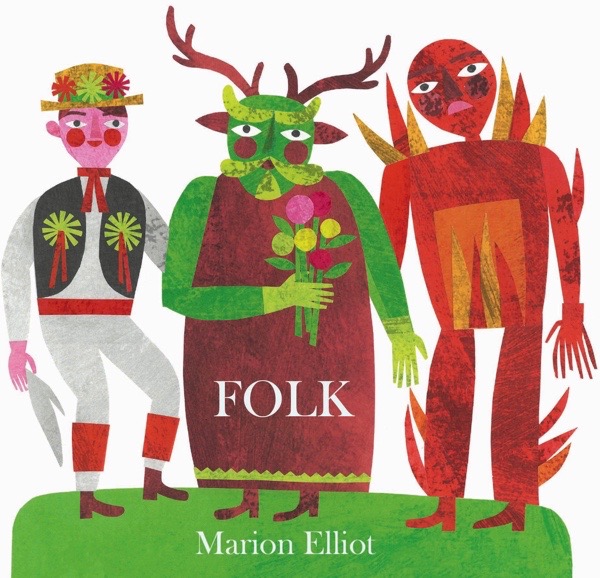
Marion Elliot will giving a lecture about her illustration, use of papercuts, and inspirations at the BLOOMSBURY JAMBOREE, 2nd & 3rd December at Art Workers Guild, 6 Queen Sq, WC1N 3AT.
Click here to book for Marion Elliot’s lecture at 11am on Sunday 3rd December
‘I have a great love of folk culture and popular art. I love shop fronts, fairgrounds, hand-painted signage, advertising imagery and typography, tattoos, workers’ guild banners, mottos, catch-phrases, religious iconography and paper ephemera.
I use printmaking techniques to produce densely-textured papers for my collage work and I am very fond of paper cutting, so my collage has developed from experiments with this technique.
I like collage because it offers me freedom to move all the elements around until I feel that the design looks right. I find creating the collages very contemplative, rather like making a large jigsaw puzzle and I can get lost for hours just moving bits around.’
Marion Elliot

Sailor’s pincushion
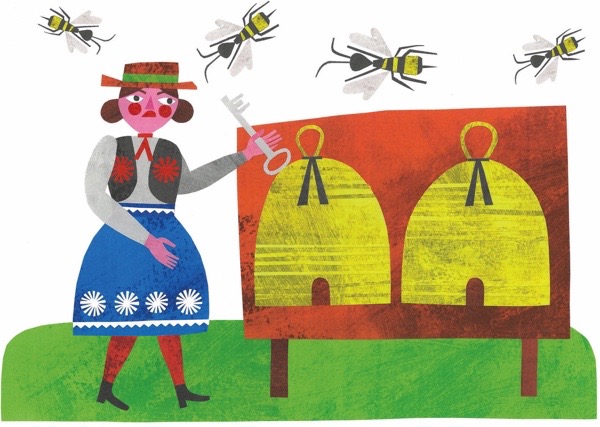
Telling the bees

Lammas Day
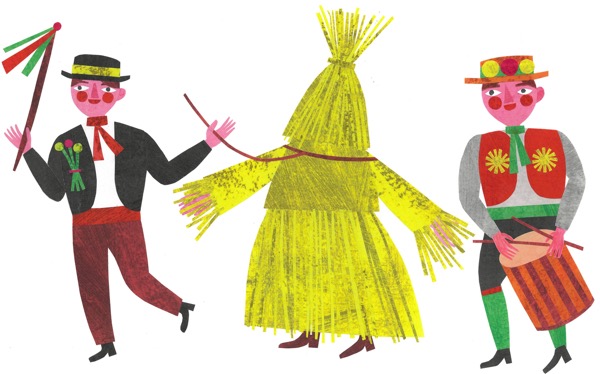
The Straw Bear
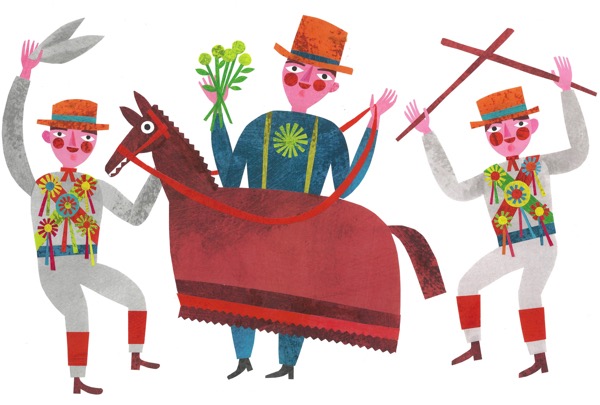
The ‘Obby ‘Oss
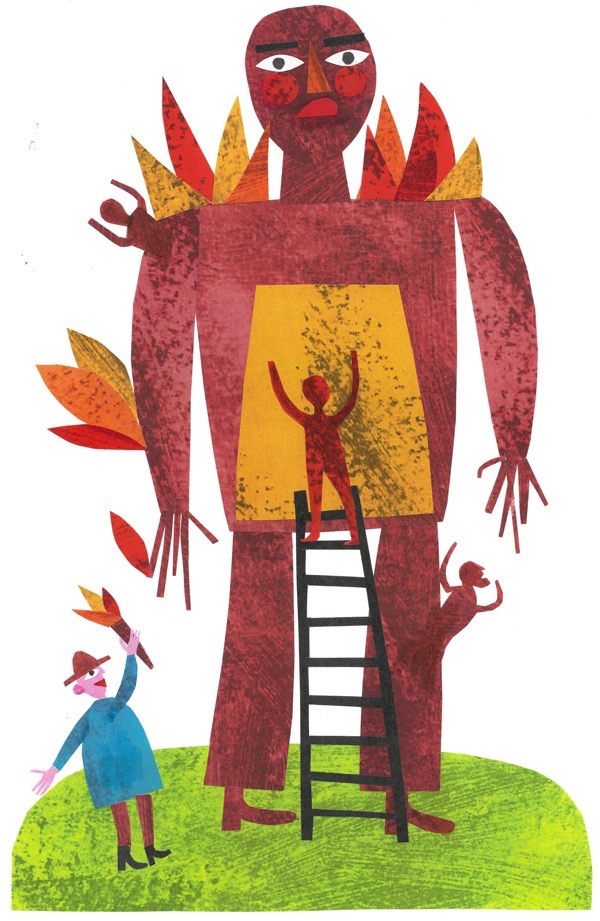
The Wicker Man

Fortune Teller
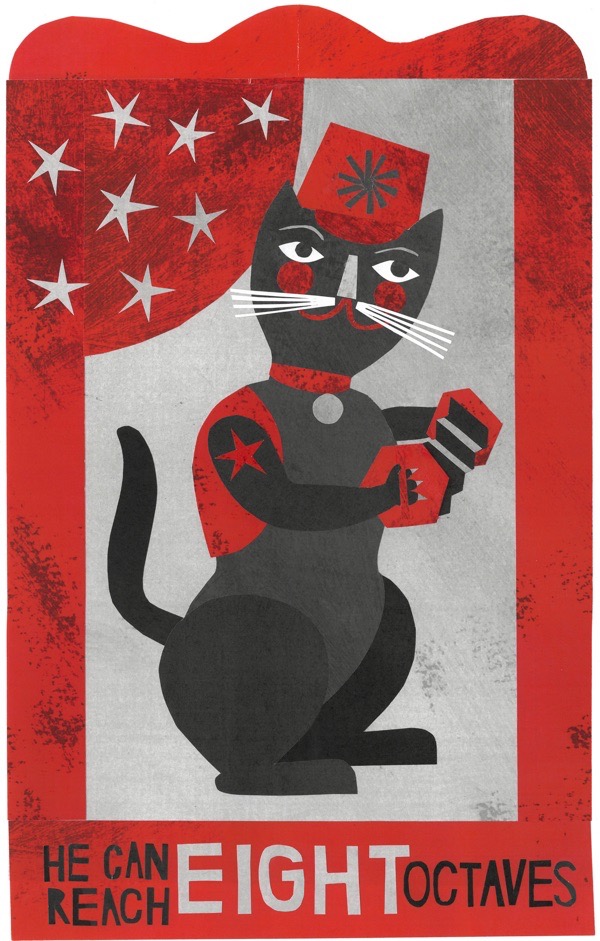
Wonder Cat

Perseverance

Prepare ye to meet thy God

Judy makes tea

Judy calls the police
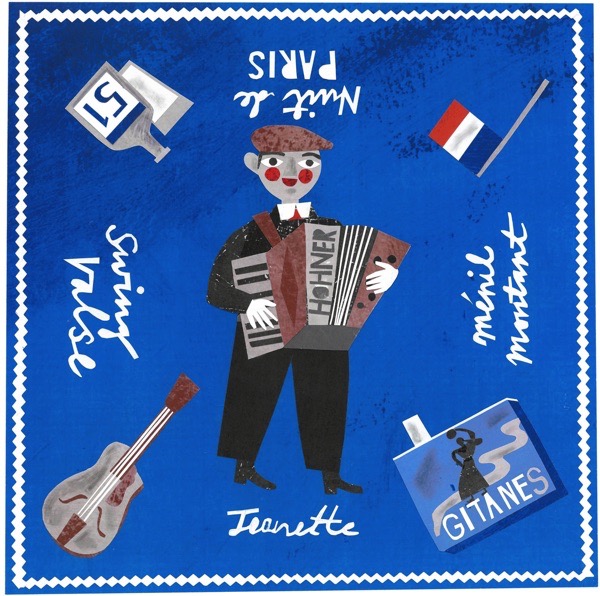
Nuits de Paris
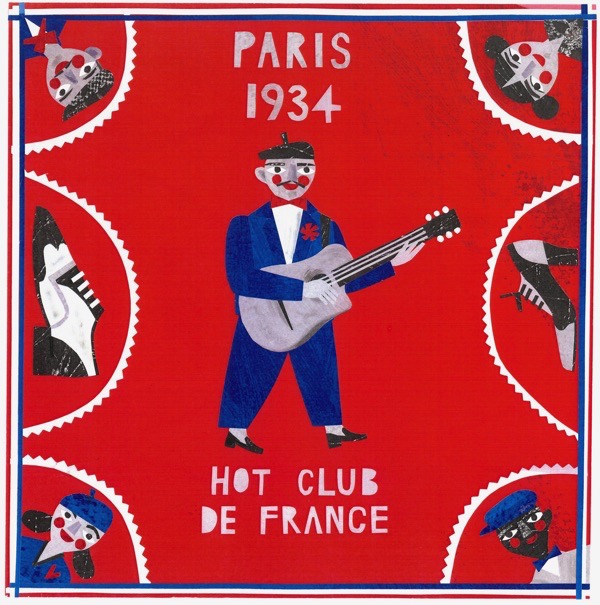
Hot Club
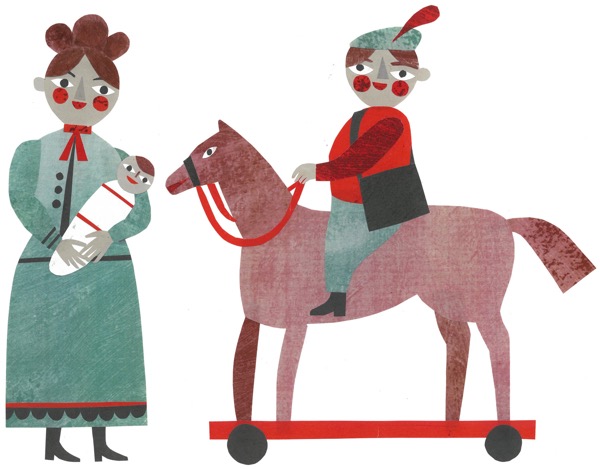
Mother and me
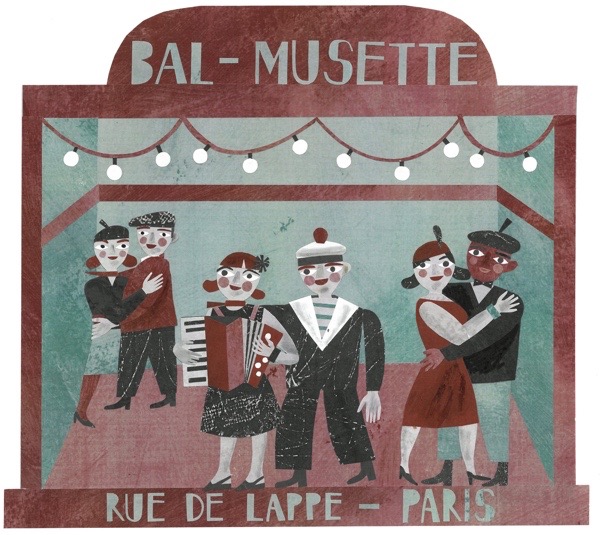
Bal-Musette
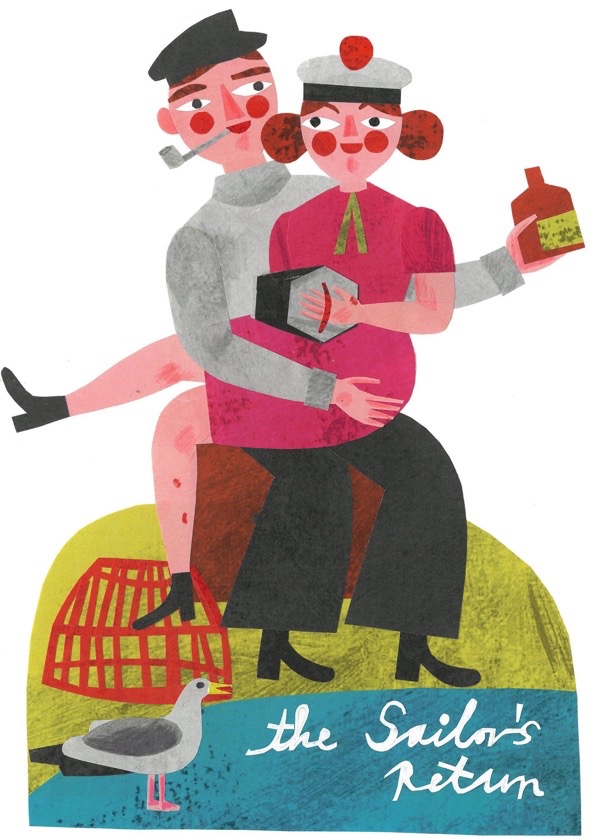
The sailor’s return
Illustrations copyright © Marion Elliot
No Longer The Last Derelict House
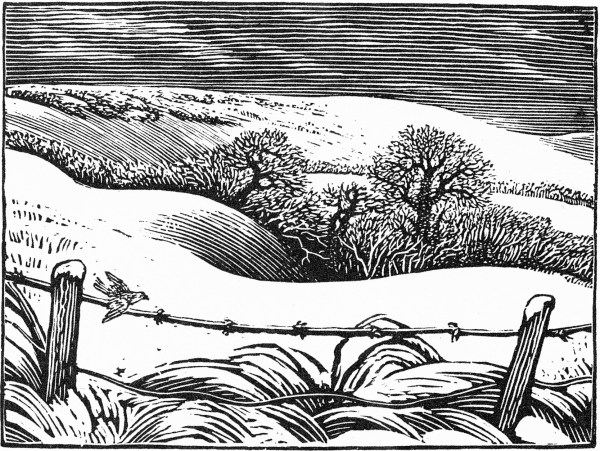
I am reading my short story ON CHRISTMAS DAY next Saturday 2nd December at 11am as part of the BLOOMSBURY JAMBOREE at the Art Workers’ Guild in Queens Square, WC1N 3AT.
CLICK HERE TO ORDER A SIGNED COPY FOR £10
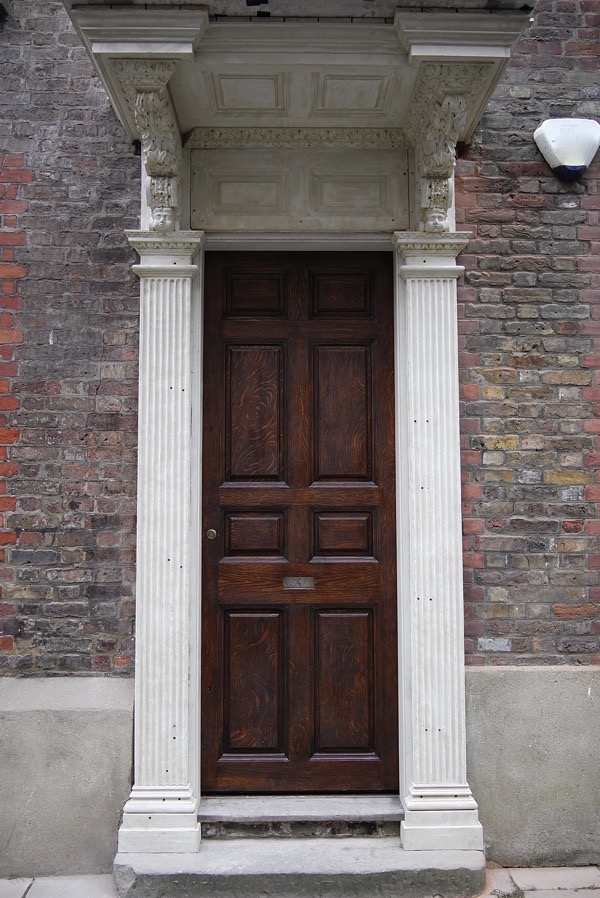
Thirteen years ago I visited, 2 Wilkes St, the last derelict house in Spitalfields but this week I walked passed to discovered it has acquired – as if by magic – a splendid new doorcase, so sensitively made that it looks as if it were always there. This is visible evidence on the street of a long process of repair and now the house can no longer be said to be derelict, thanks to enlightened owner Rupert Hunt and talented architect Chris Williams.
Below you can read my original feature and photographs. I hope to follow this next year with pictures that show the interiors once repairs are complete.
In the meantime, you can follow the progress on Instagram @spitalfields1725
This is the view of Nicholas Hawksmoor’s spire of Christ Church seen from the weaver’s loft at the top of 2 Wilkes St – once the last derelict house in Spitalfields – which is currently in the process of conscientious repair.
Once upon a time people used to wander in these streets surrounding the shabby old church, savouring the romance of these ancient Huguenot houses that had seen better days and were then used as workplaces or left empty, but now those days are long gone
Most recently 2 Wilkes St served as a warehouse for Star Wholesale Cash & Carry. Previously, it had been a workplace with boards nailed over panelling, false ceilings added and layers of flooring concealing the original floorboards. Behind all these accretions, the old structure remained intact and when the additions were removed, along with some of the fabric – in a former abortive restoration attempt – no-one bothered to dispose of any of the timber from the house. The piles that lay around comprised the missing pieces of an enormous three dimensional jigsaw just waiting to be put back together. Elsewhere in Spitalfields, old properties have been turned upside down and stripped out, removing all evidence of the previous occupants, yet as a consequence of benign neglect, 2 Wilkes St existed as an eighteenth-century time capsule.
Stepping through the door, I was amazed by the multilayered textures that were the result of human activity throughout the long history of the building, especially the flaking paint that revealed every single coat through back three centuries. The house has a presence that halts you in your step and you lower your voice without knowing why. You stand and gaze. The reflected light from the street falls upon dusty old floorboards visibly worn beside the windows where people have stood in the same spot to look down upon Wilkes St since the seventeen-twenties – when the house was built by William Taylor, who was responsible for the house next door and several others in the vicinity.
Ten years ago, the central staircase of the house was rebuilt with the original treads on wooden bearers that support each step in the traditional method, starting at the bottom and working all the way up – just as a joiner would have done in the eighteenth-century, when all carpenters did their work on site.
Descended into the dark musty cellar by torchlight, I could see my own breath in the air as I entered a kitchen where the beam of light fell upon eighteenth-century match-boarding and a flag floor. The torchlight caught portions of an old dresser and a stone sink, beneath layers of dust, grit and filth – abandoned since the nineteenth century.
On the first floor, an intermediary space off the stairwell links rooms on either side, divided from them by partitions – this is a rare example of a powder room. Any of Henry Fielding’s characters would recognise this space.
Of all the old houses in Spitalfields, this is the one that has most retained its soul. The house holds its own silence and the din of the contemporary world is drowned out by it. 2 Wilkes St possesses the authentic atmosphere of old London that Fielding and Dickens knew, yet which can all too easily be destroyed forever. All these years it has been waiting for someone with the knowledge, money and patience to repair it and bring it back to life without erasing its history – and now this moment has arrived.
Eighteenth century staircase spindles
The view along the back gardens of Fournier St

2 Wilkes St
You may also like to read about
All Change at 15 & 17 Fournier St
Bloomsbury Jamboree Readings & Talks

You are invited to our annual BLOOMSBURY JAMBOREE which runs from 11am-5pm on Saturday 2nd & Sunday 3rd December at Art Workers’ Guild, 6 Queen Sq, WC1N 3AT.
We are showing the work of twenty of our favourite artists and makers, and we are proud to present this accompanying programme of readings and talks. Tickets are £10 which includes entry to the Jamboree.

Wood engraving by Reynolds Stone
ON CHRISTMAS DAY – A READING BY THE GENTLE AUTHOR
The Gentle Author picks up the threads of Christmas fiction from Charles Dickens, Dylan Thomas and George Mackay Brown to weave a compelling tale of family conflicts ignited and resolved in the festive season.
Click here to book for The Gentle Author’s reading at 11am on Saturday 2nd December
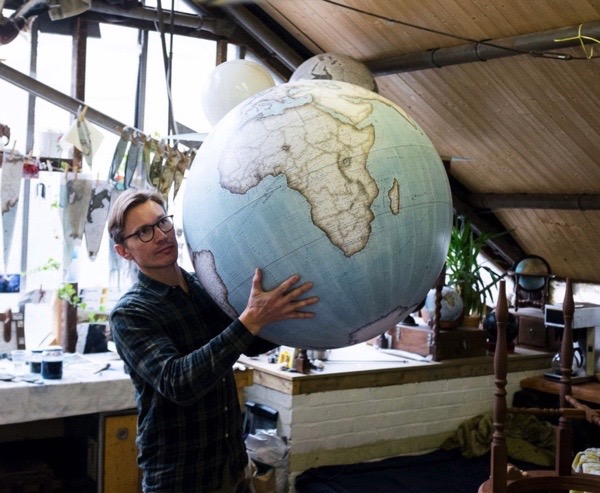
Photo by Sebastian Boettcher
THE GLOBEMAKERS – THE CURIOUS STORY OF AN ANCIENT CRAFT
Peter Bellerby introduces his new book, ‘The Globemakers: The Curious Story of an Ancient Craft’, in conversation with Basil Comely. Peter is founder of Bellerby & Co. Globemakers, the world’s only truly bespoke makers of traditionally handcrafted globes.
Click here to book for The Globemakers at 12:15pm on Saturday 2nd December

Cover by Matt Johnson
MATT JOHNSON, SEASALT & LOBSTER POTS
Matt Johnson recently illustrated ‘Red Sails & Pilchards’ published by Design for Today. Thousands recognise Matt’s lyrical images of Cornish harbours, wildlife and landscapes, featured widely in books and advertising.
Click here to book for Seasalt & Lobsterpots at 1:30pm on Saturday 2nd December
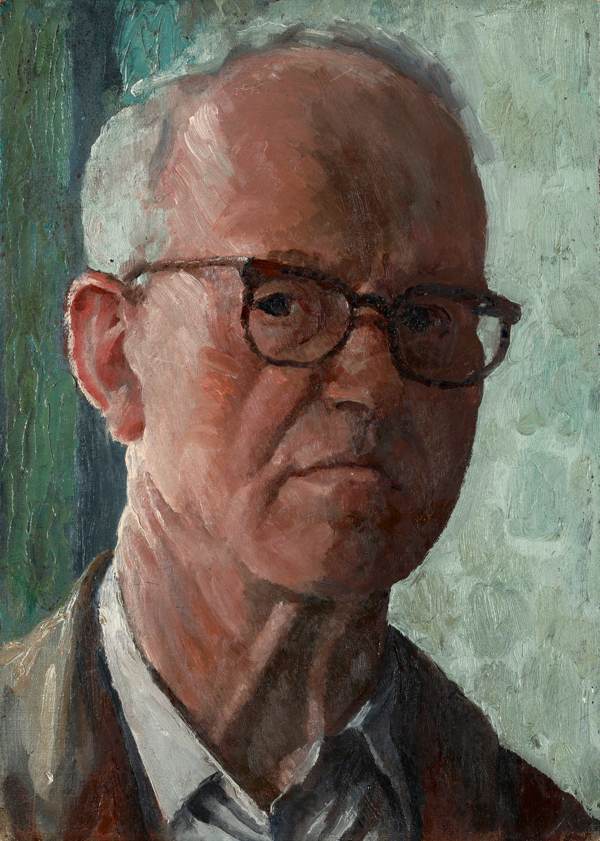
Self portrait by Morris Goldstein
MORRIS GOLDSTEIN – THE LOST WHITECHAPEL BOY
We present a selection of the unseen paintings of Morris Goldstein – contemporary of Mark Gertler and David Bomberg – to mark the publication of a new monograph. The talk will be introduced by Professor Rebecca Beasley and presented by Morris Goldstein’s son Raymond Francis who has been researching his father’s story for the last ten years.
Click here to book for The Lost Whitechapel Boy at 2:45pm on Saturday 2nd December

Tea towel by Marion Elliot
MARION ELLIOT – SAILORS, TEAPOTS & FOLK ART
Marion Elliot, illustrator, collage artist and maker, explores her influences, inspiration and process, creating a unique world where Jaques Tati meets Hank Williams and in which folk art collides with cafe culture.
Click here to book for Sailors, Teapots & Folk Art at 11am on Sunday 3rd December
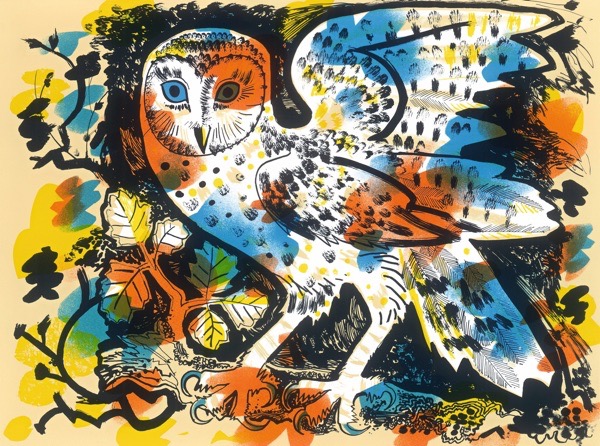
Print by Mark Hearld
DAVID BUGG – THE PENFOLD PRESS
Printmaker Dan Bugg of The Penfold Press will be in conversation with curator Jane Audas, outlining the journey of the press and their celebrated partnerships with contemporary artists.
Click here to book for The Penfold Press at 12:15pm on Sunday 3rd December
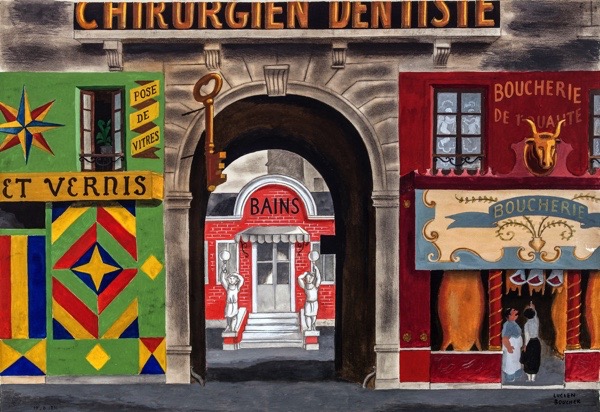 Lithograph by Lucien Boucher
Lithograph by Lucien Boucher
JAMES RUSSELL – A TIME-TRAVELLER ‘S GUIDE TO PARIS
Art historian James Russell takes a journey into the wonderful world of twenties Paris. Published by the Mainstone Press, the Boutiques trilogy explores the city’s shops, fairgrounds and literary scene with dazzling illustrations by Lucien Boucher and Henri Guilac.
Click here for A Time-Traveller’s Guide to Paris at 1:30pm on Sunday 3rd December
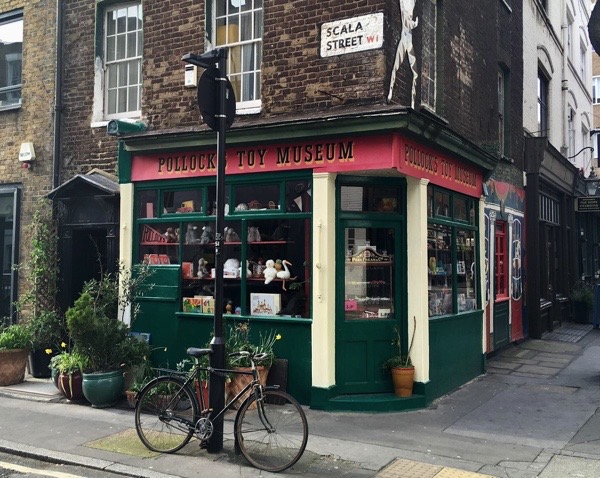
Pollock’s, Scala St
ALAN POWERS – LONDON’S OLDEST TOY MUSEUM
Pollock’s Toy Museum began in 1956 in an attic in Monmouth St, Covent Garden, moving in 1969 to Scala Street, Fitzrovia. Today it is run by the grandson of the founder and since January 2023 this beloved museum has been looking for a new home. Alan will explore the history and reveal the future plans.
Click here to book for London’s Oldest Toy Museum at 2:45pm on Sunday 3rd December
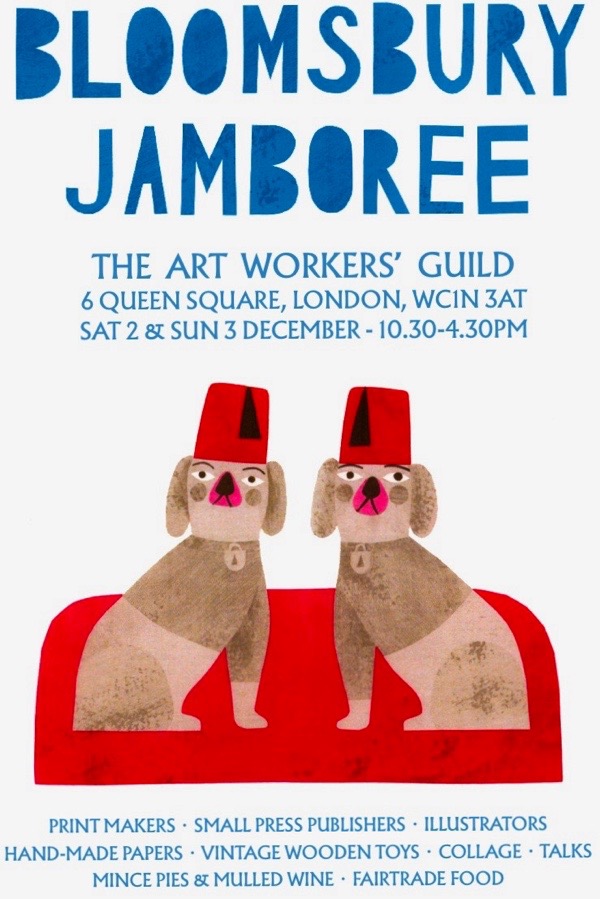
Bloomsbury Jamboree 2023

In gleeful collaboration with Tim Mainstone of Mainstone Press and Joe Pearson of Design for Today, I am hosting our annual BLOOMSBURY JAMBOREE, a festival of books and print, illustration, talks and seasonal merriment next SATURDAY 2nd & SUNDAY 3rd DECEMBER from 10:30am until 4:30pm.
It takes place at the magnificent ART WORKERS GUILD, 6 Queens Sq, WC1, which was founded in 1884 by members of the Arts & Crafts movement including William Morris and C R Ashbee. These oak panelled rooms lined with oil paintings in a beautiful old house in Bloomsbury offer the ideal venue to celebrate our books, and the authors and artists who create them.
There will be book-signings and a programme of ticketed lectures and readings plus we have invited twenty friends to exhibit, including print and paper makers, small press publishers, toy makers, potters, craft workers and importers for food by small producers.
We need volunteers on Friday at 6:30pm and all day Saturday and Sunday. We offer bags of books as rewards – if you can help us, please email hello@inkpaperandprint.co.uk
CLICK HERE FOR DETAILS OF OUR LECTURES
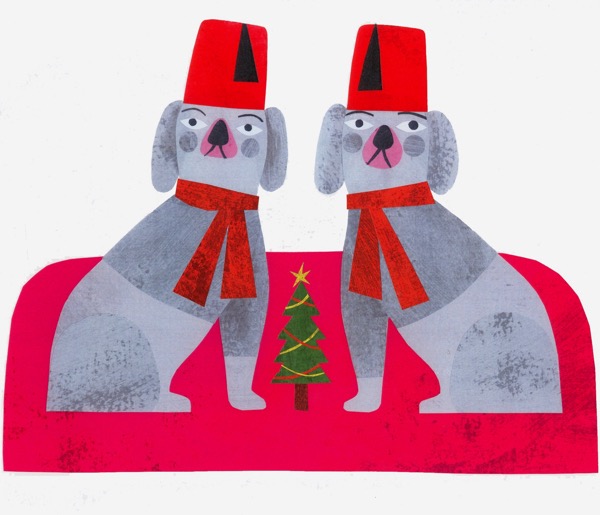
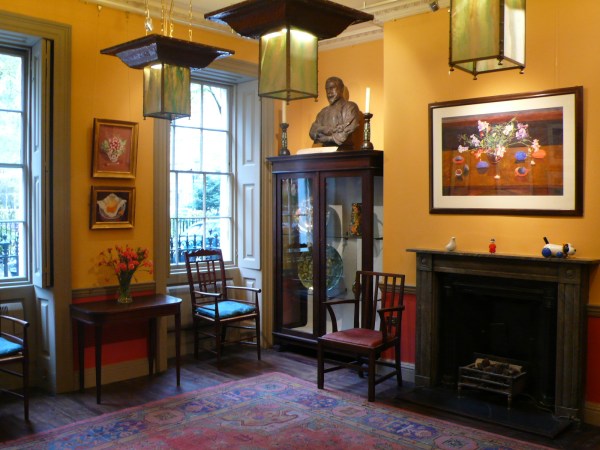
Art Workers Guild
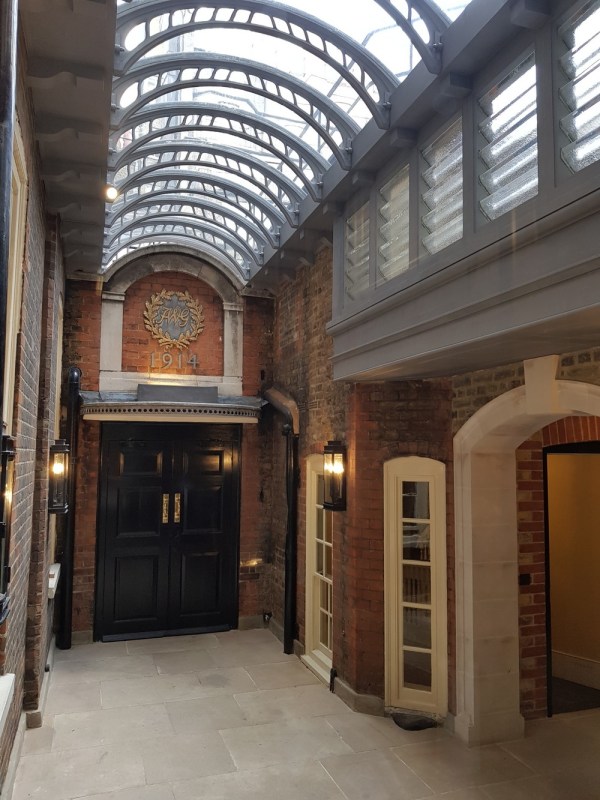
Art Workers Guild

Art Workers Guild

Elizabeth Harbour

From Boutiques by Lucie Bouchier published by Mainstone Press
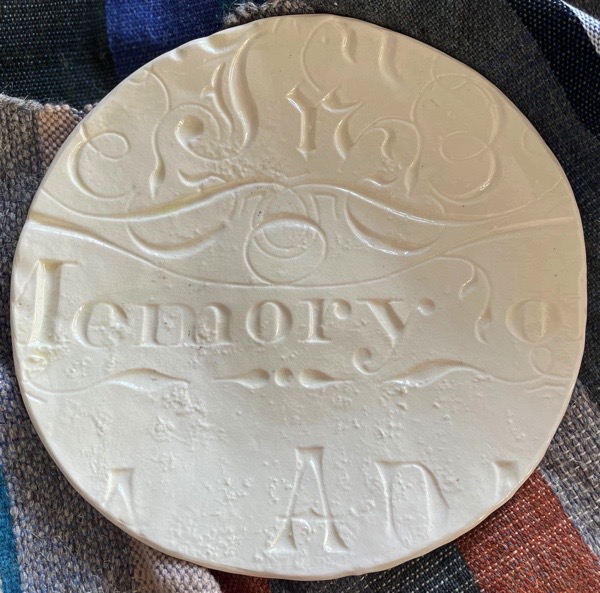
Plate by Simon Turner
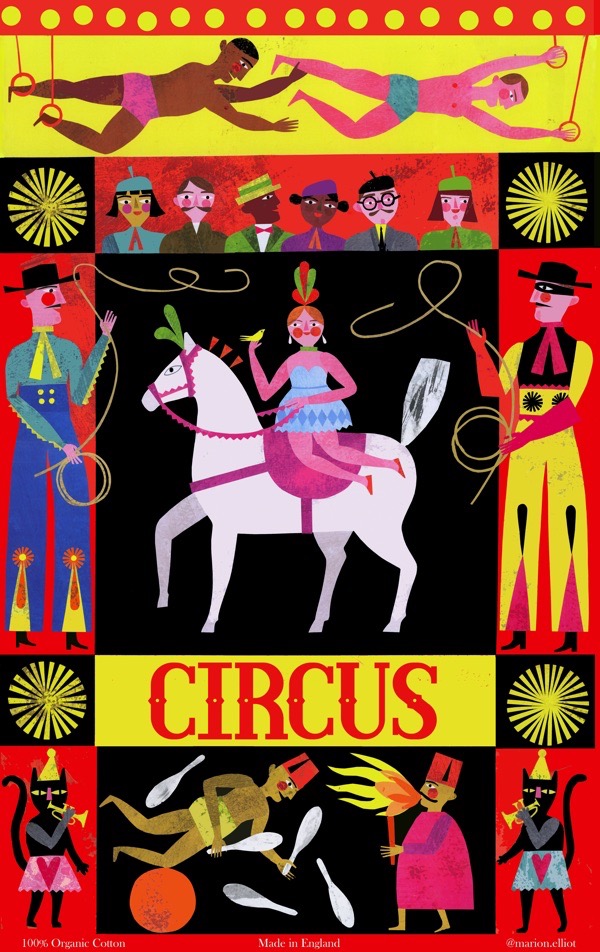
Tea towel by Marion Elliot
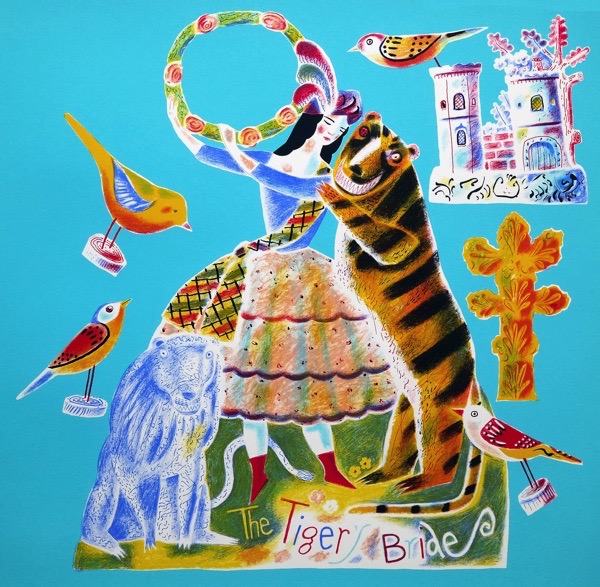
The Tiger’s Bride by Clive Hicks-Jenkins published Penfold Press
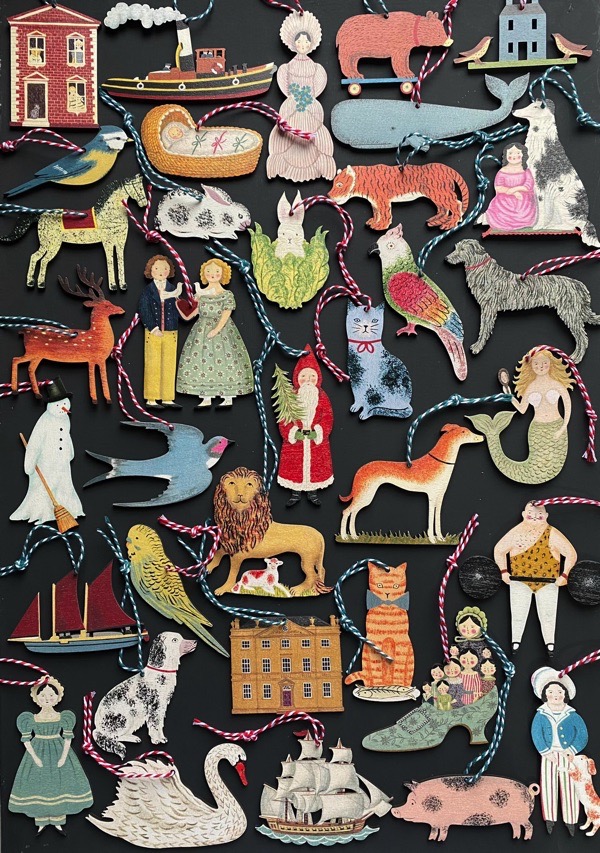
Elizabeth Harbour
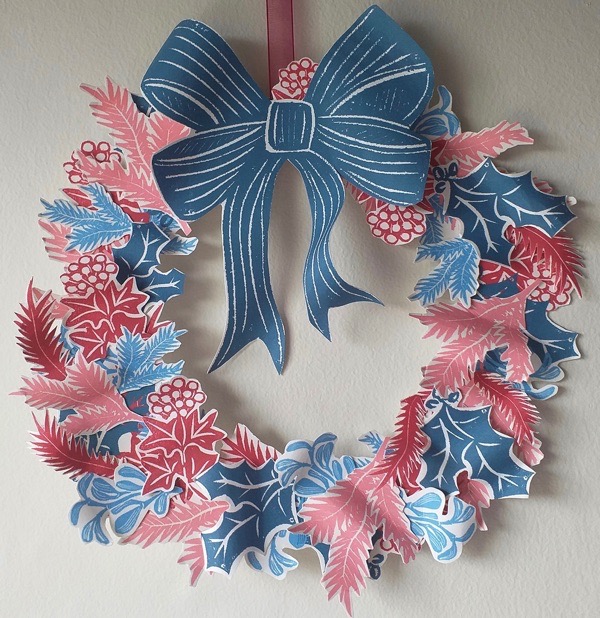
Paper wreath by Clare Dales
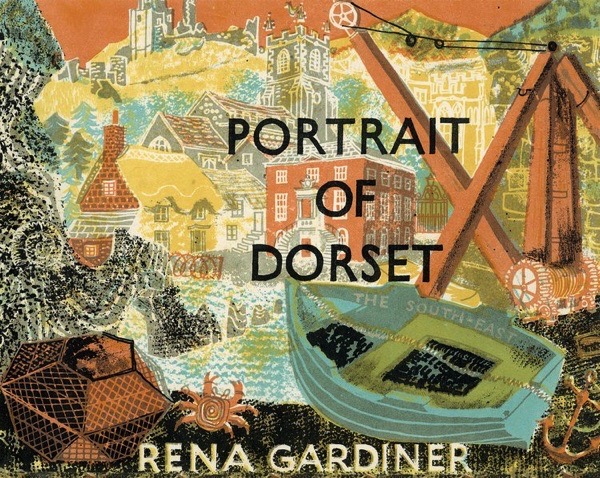
Portrait of Dorset by Rena Gardiner published by Design for Today

Provisions imported by Sail Cargo London
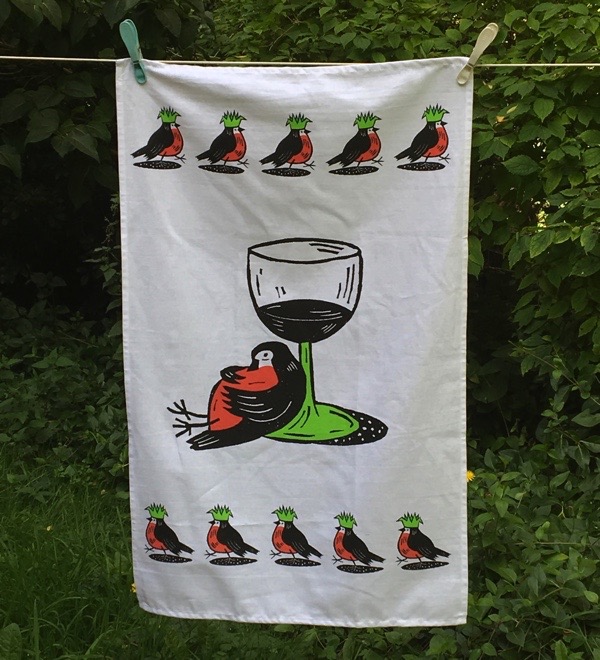
Tea Towel by Chris Brown
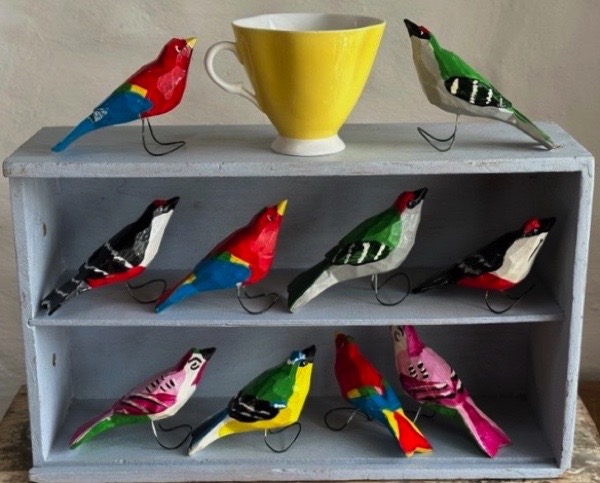
Folk art from Poland imported by Frank & Luisa

Print by Mandy Doubt
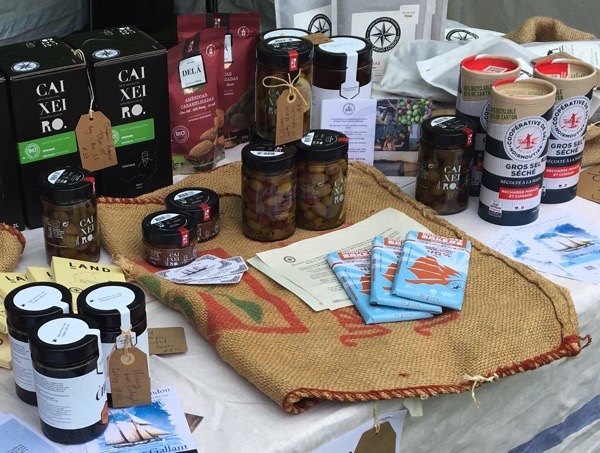
Produce imported by sail power from Sail Cargo London

Hanging decorations by Elizabeth Harbour

Cards by Yes Paper Goods
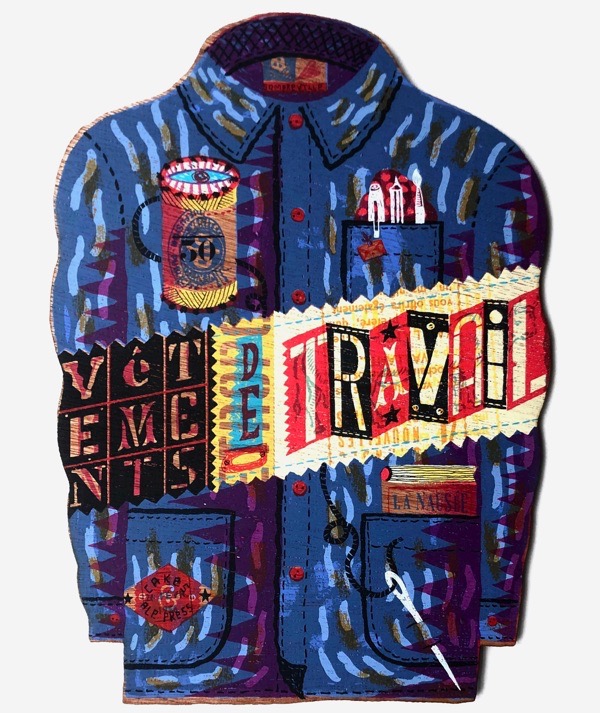
Illustration by Jonny Hannah
